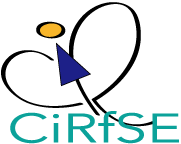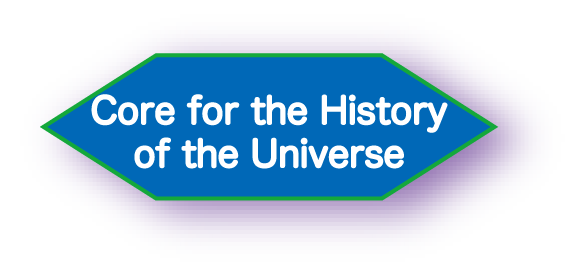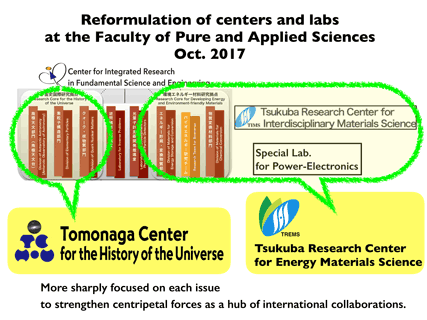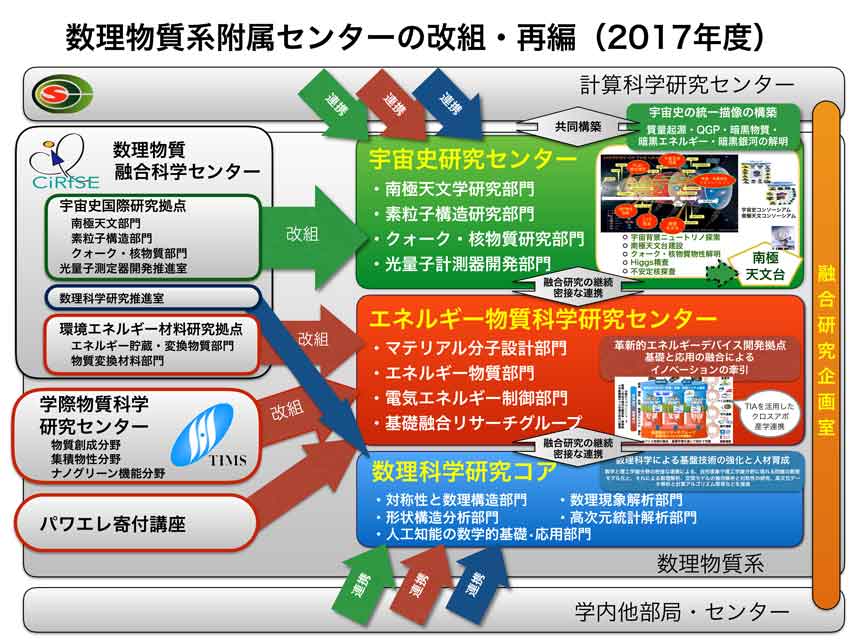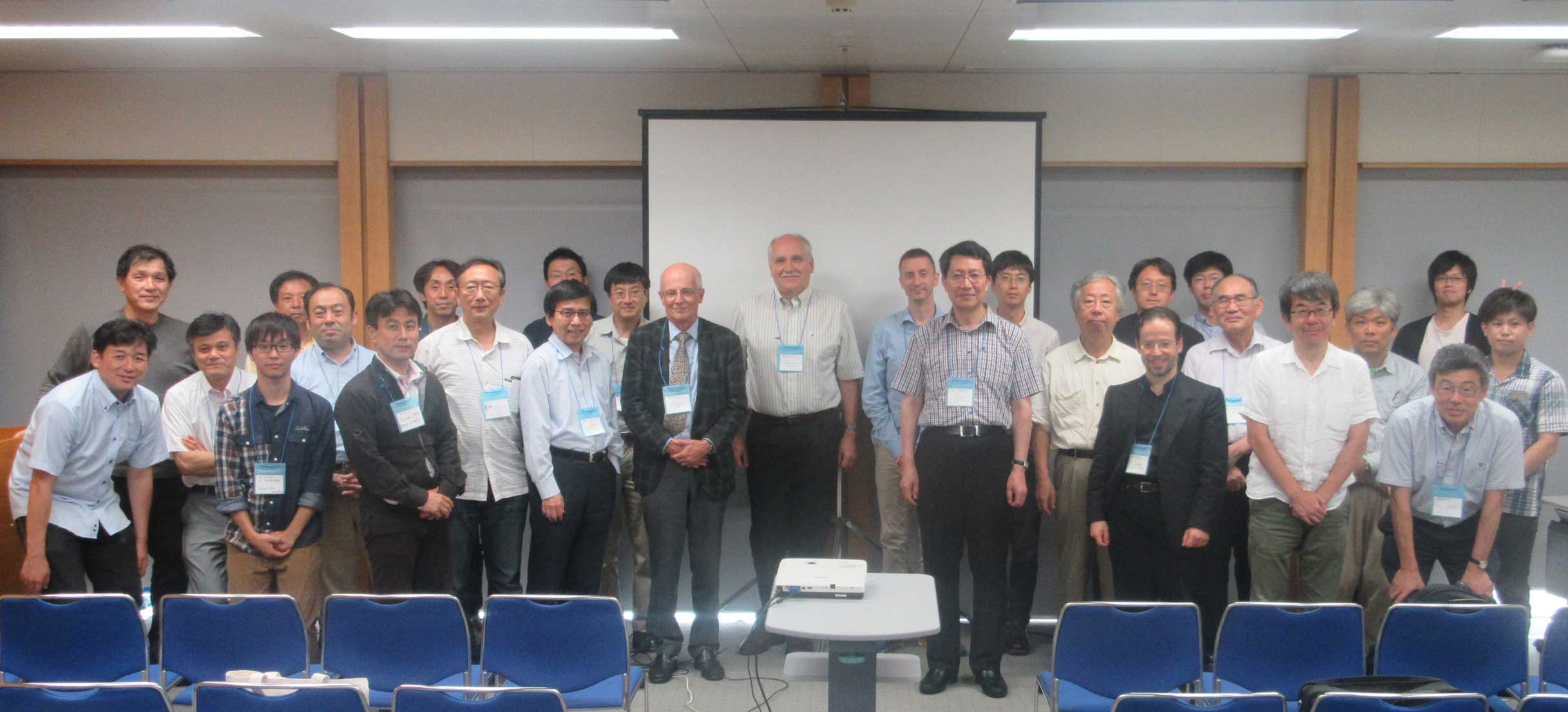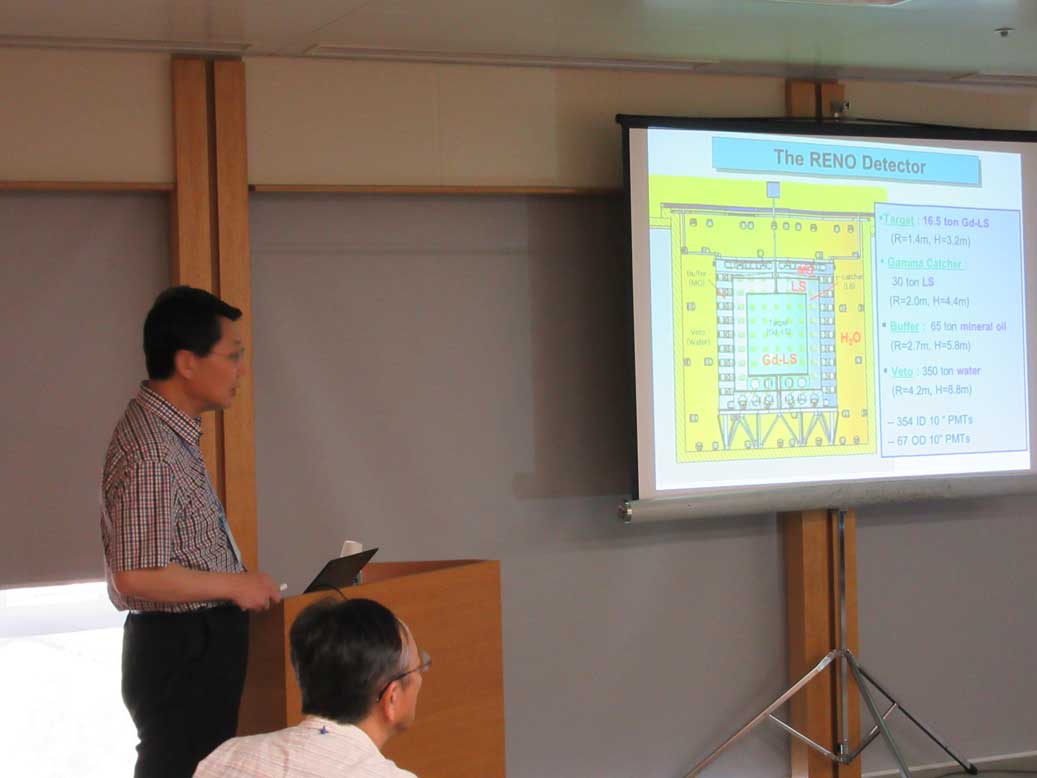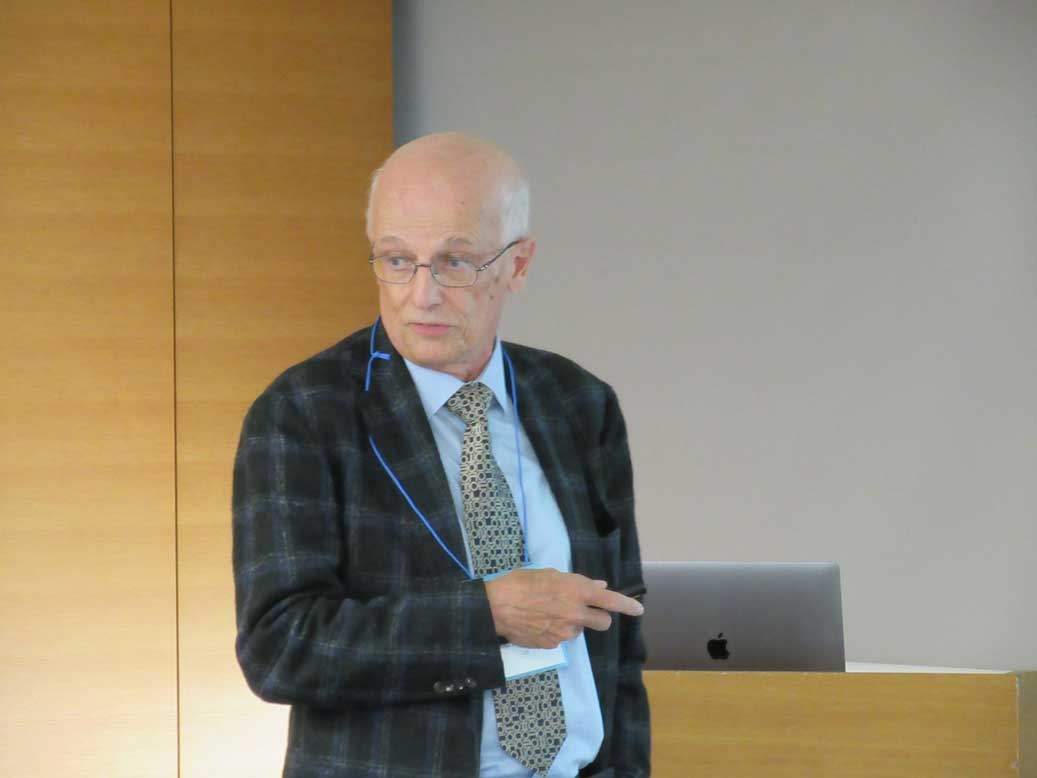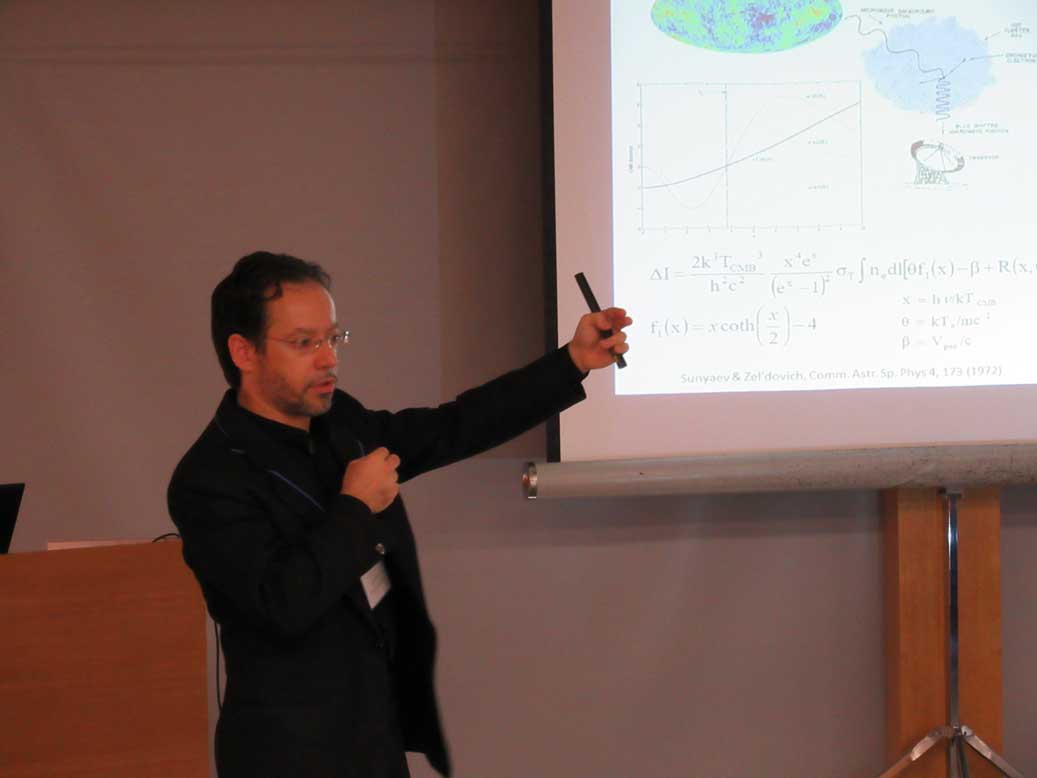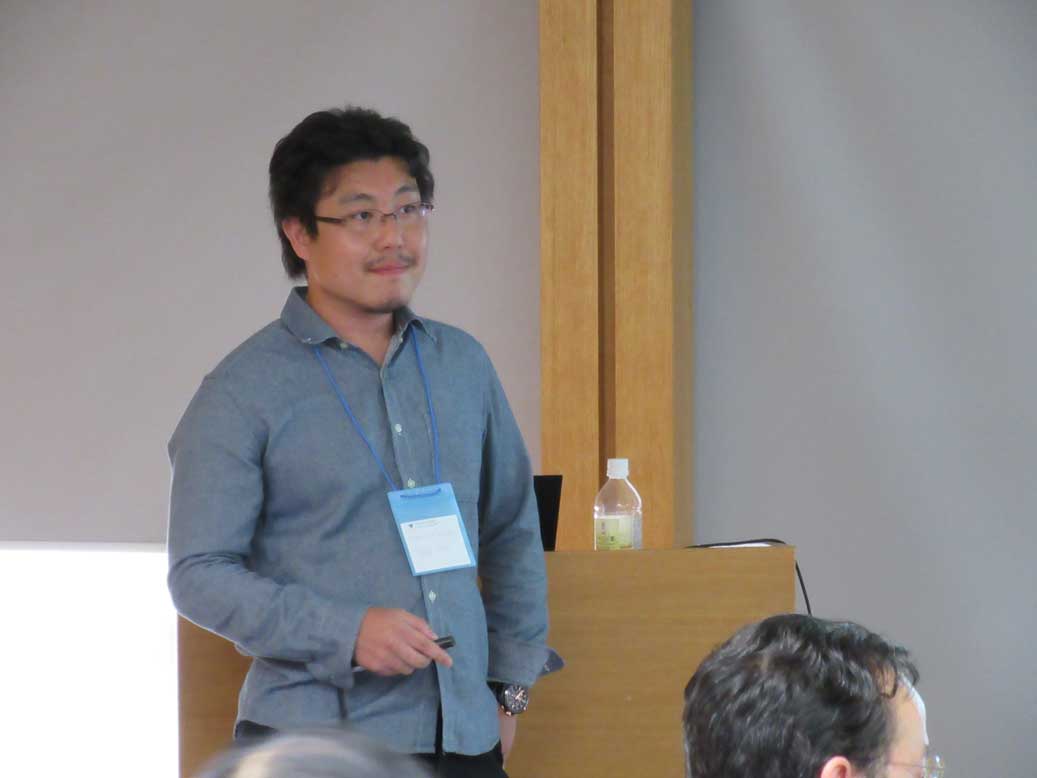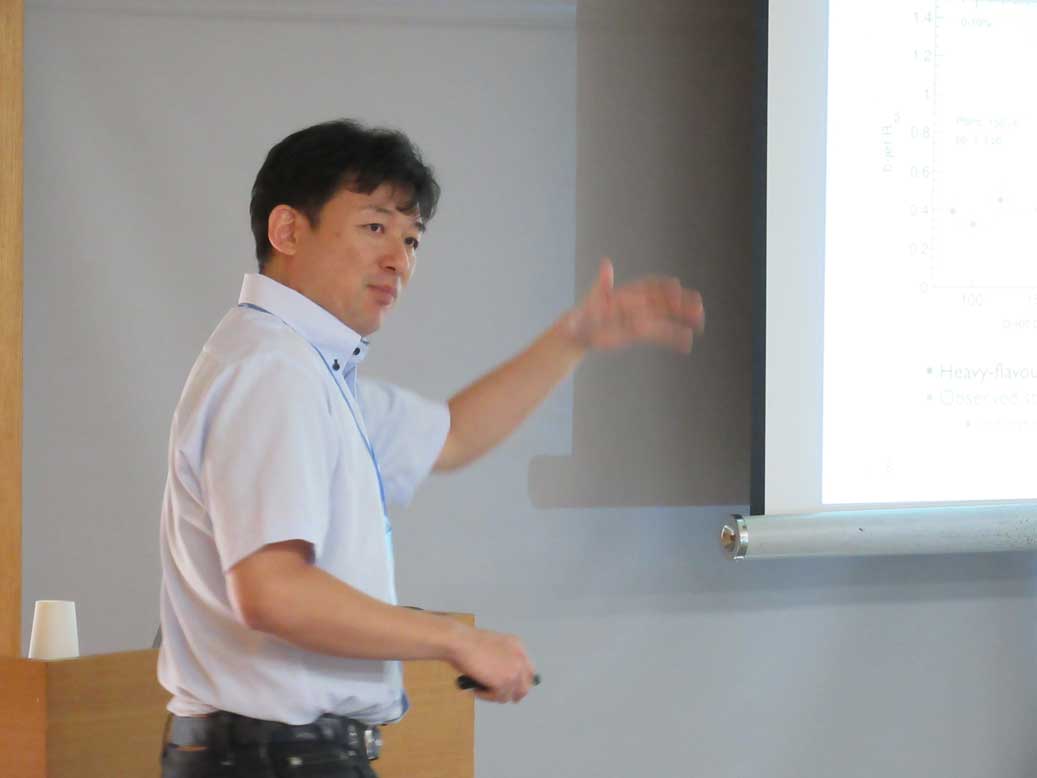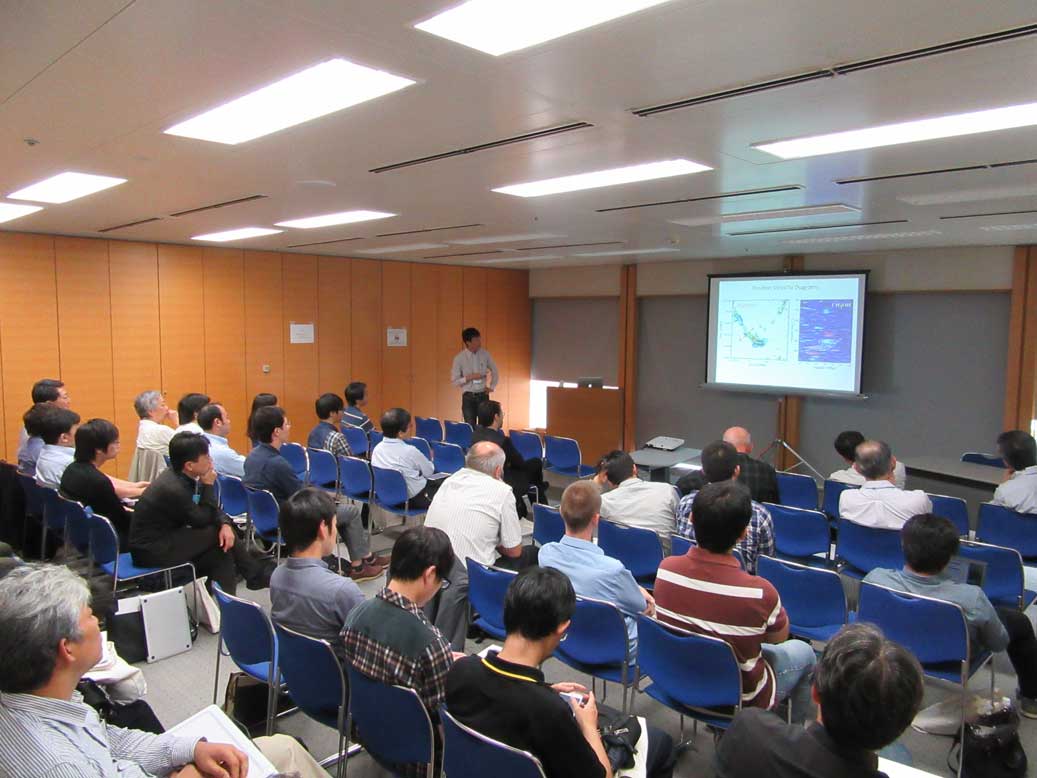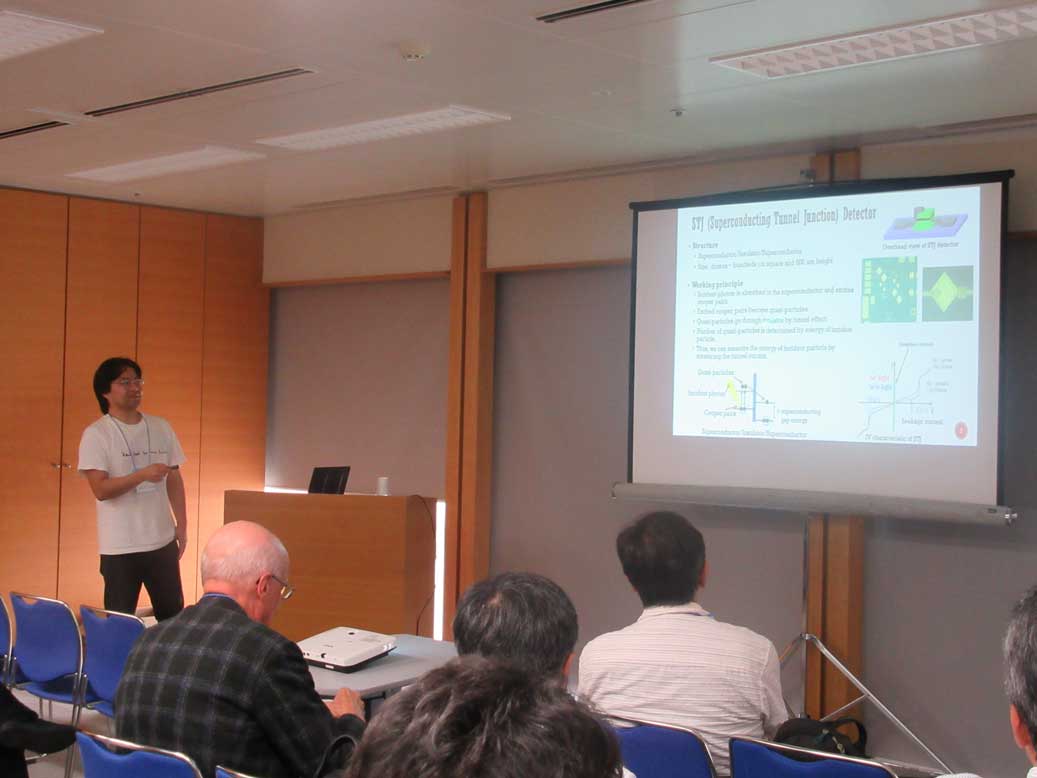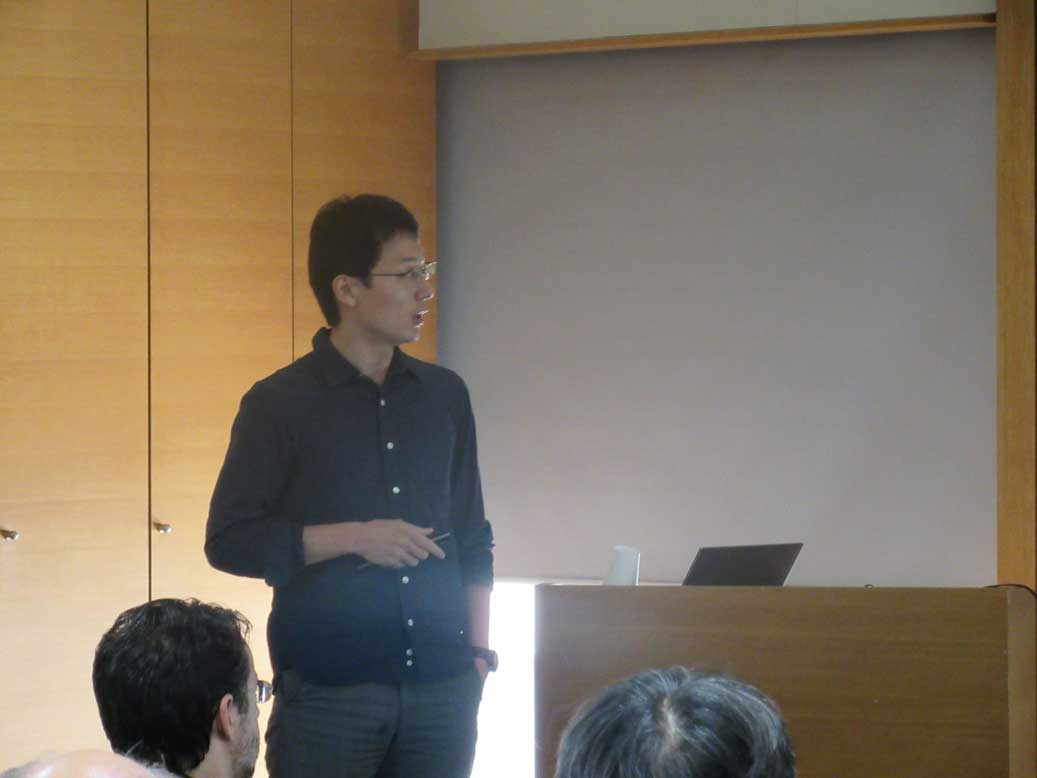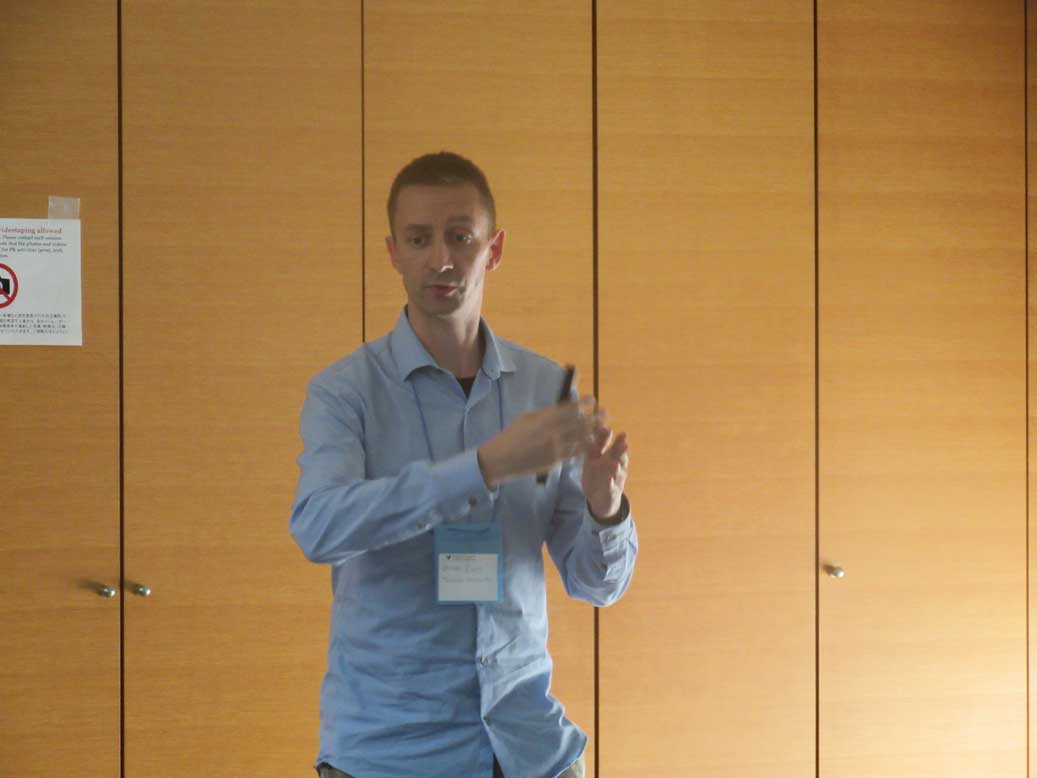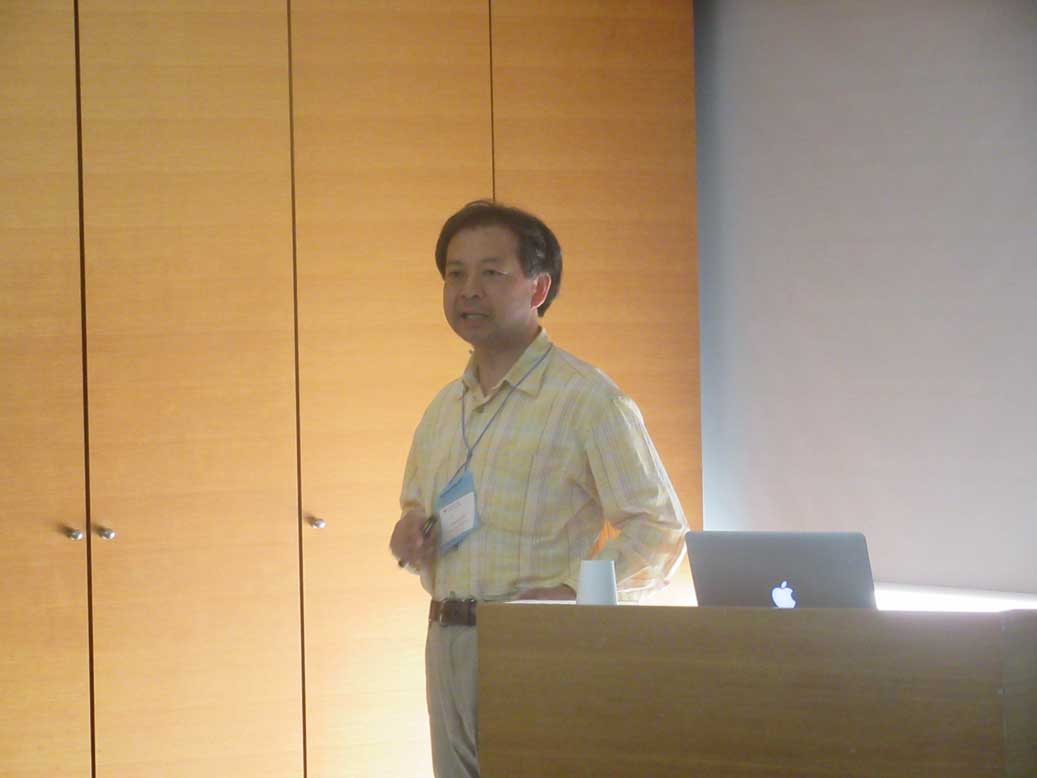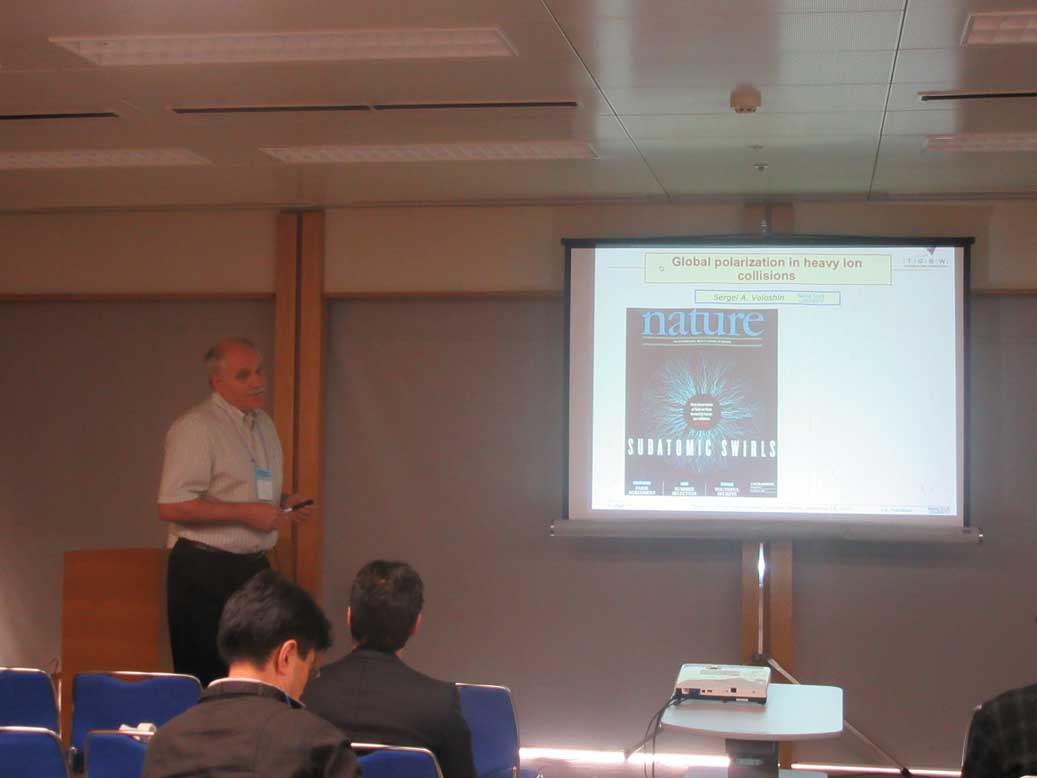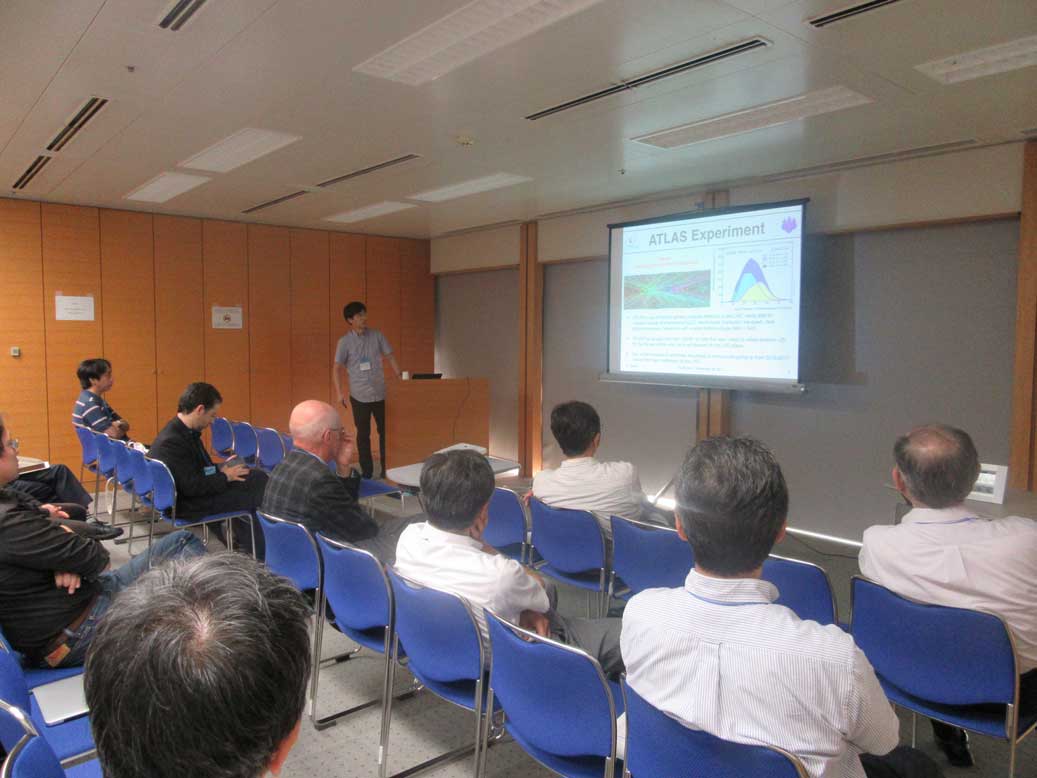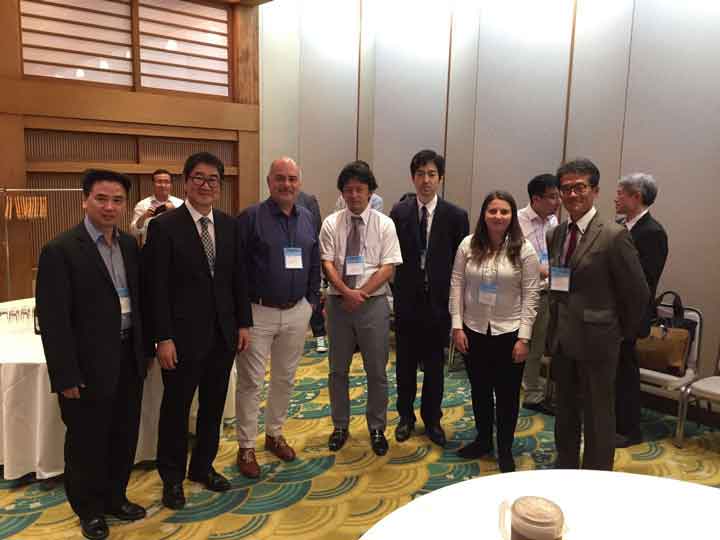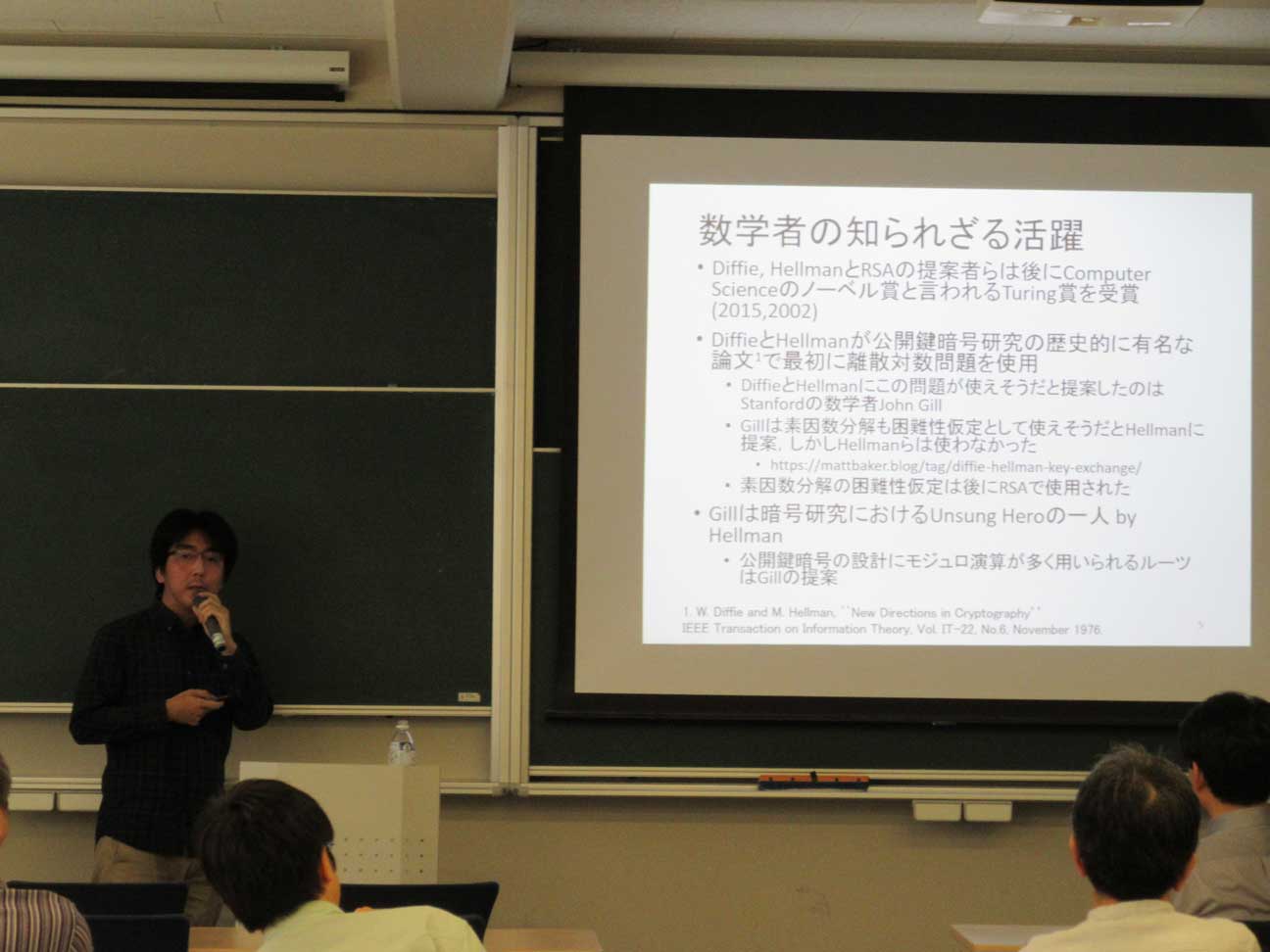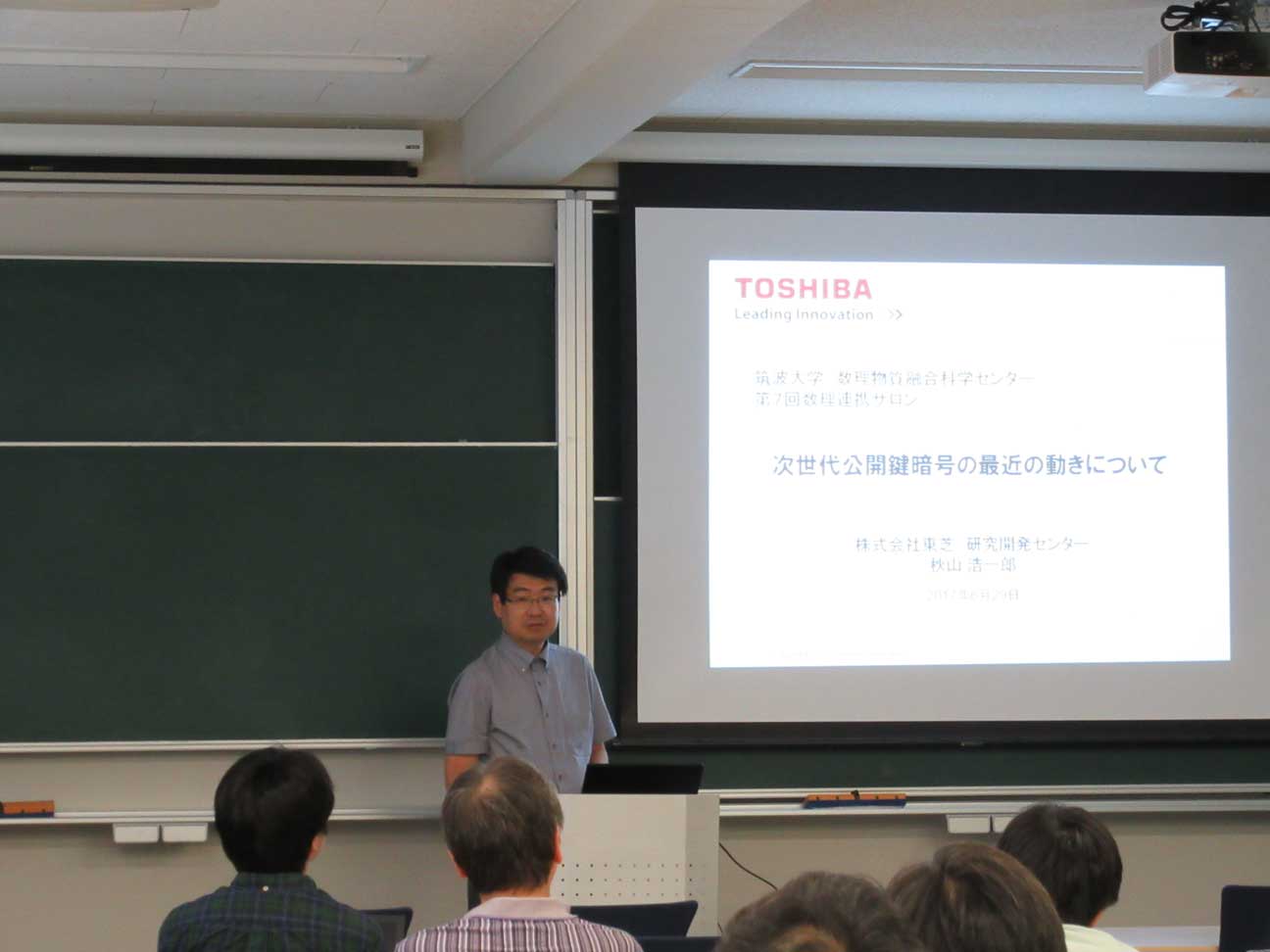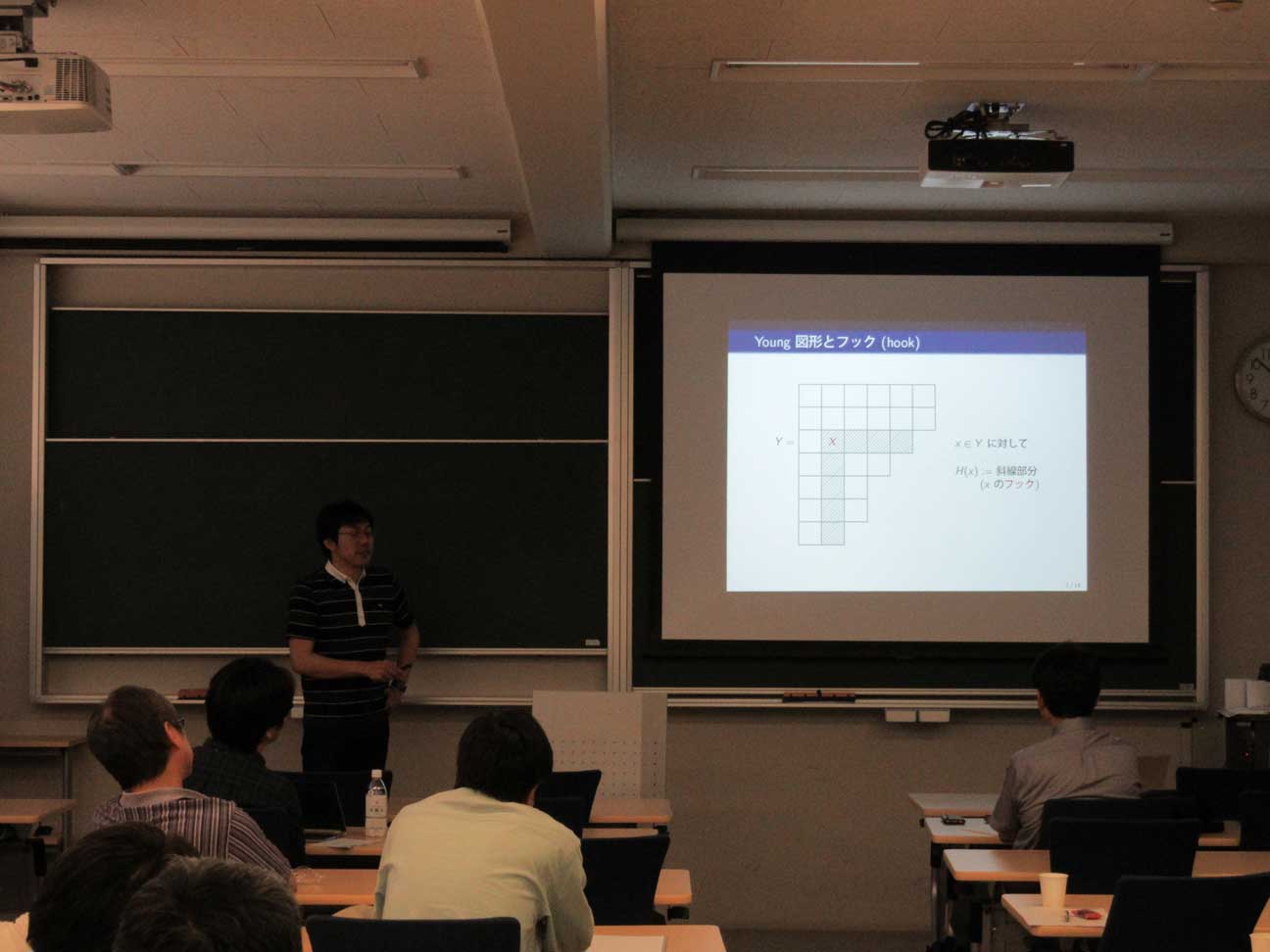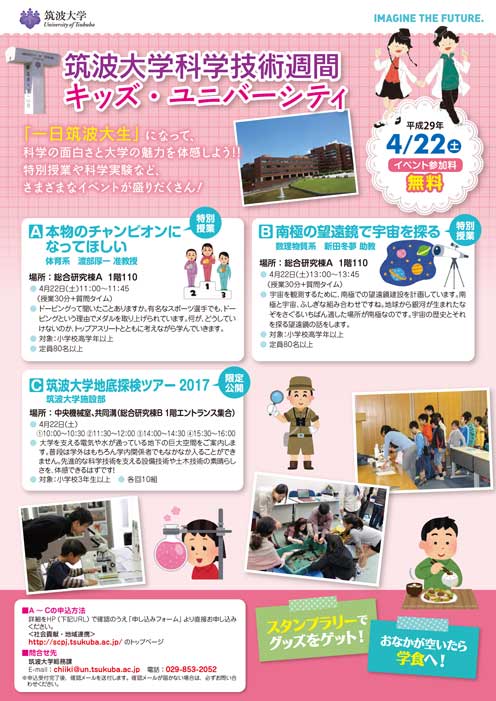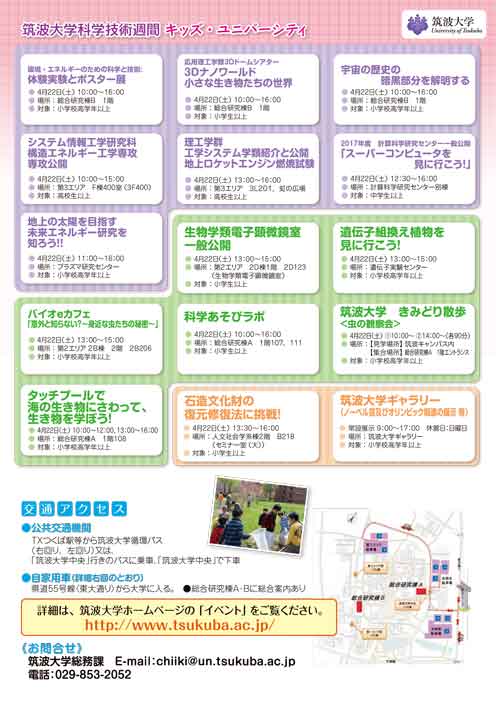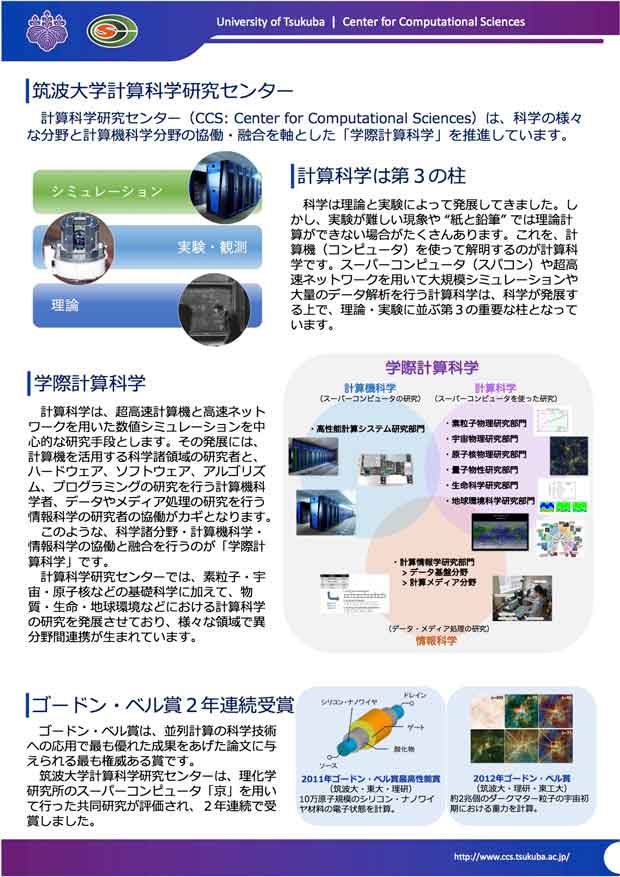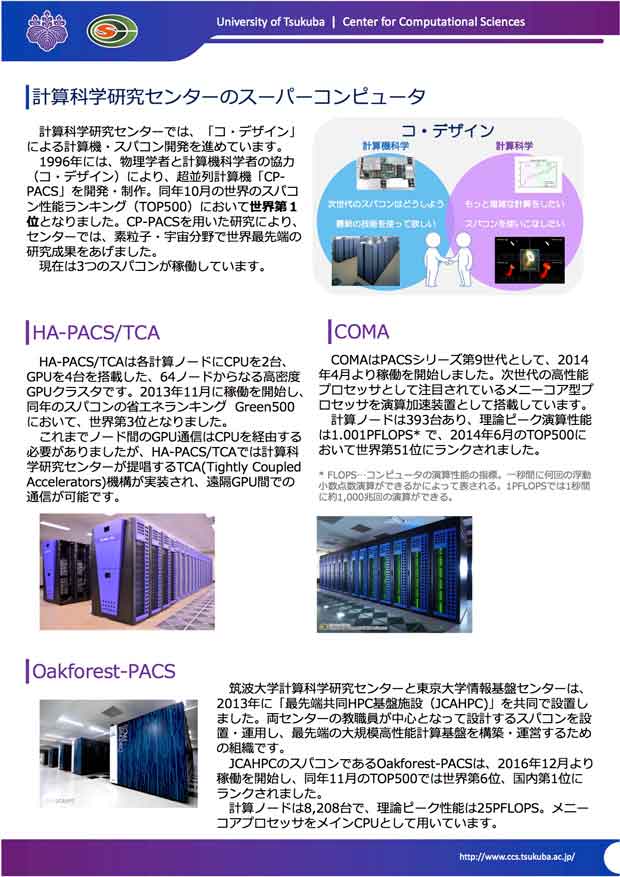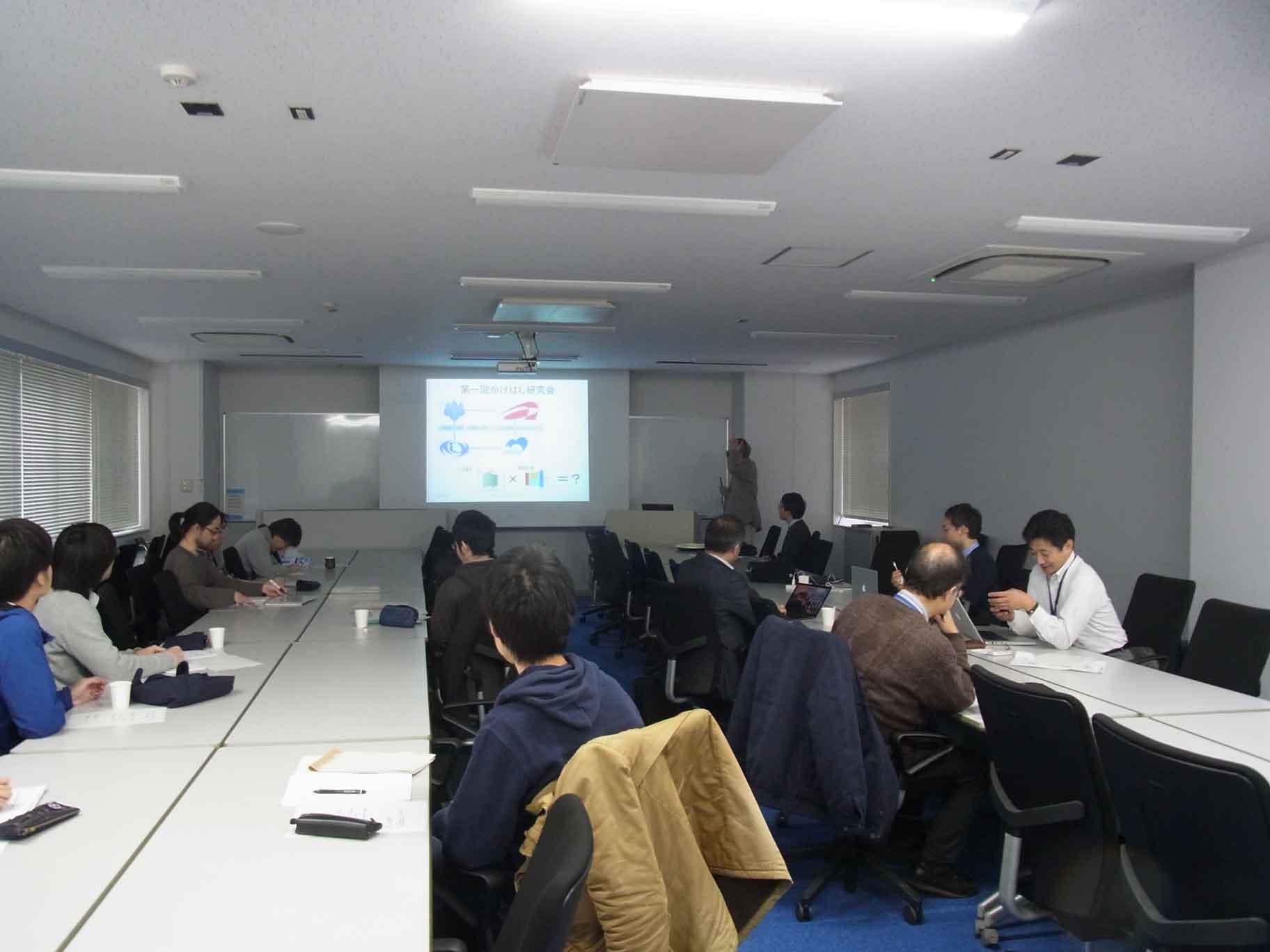- 03 Oct 2017 Last Steering Committee Meeting
Main activities of the center since the foundation on 1st Sept 2014 were summarized by the chair of the center and the coordinators of the two research cores and the two laboratories.
After the summaries, free discussions were made by the participants on the achievements as well as future prospects of the center.
- Date: 03 Oct 2017 (Tue) 14:30-17:30
- Venue: Sogo B 204
See Japanese webpage of us for the presentation files (in Japanese) on the major activities of the center since its foundation.
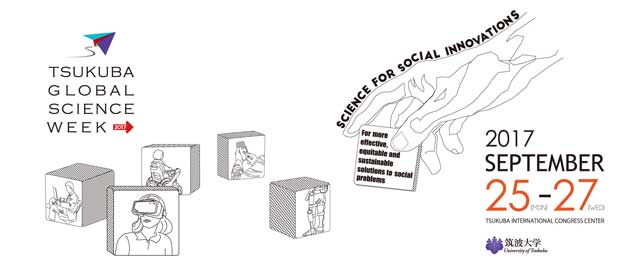
- 26-27 Sept 2017 Tsukuba Global Science Week (TGSW) 2017
As a part of the Tsukuba Global Science Week (TGSW) 2017, the Research Core for the History of the Universe organizes the 4th International Workshop on "Universe Evolution and Matter Origin" as session 8-8, and the Research Core for Developing Energy and Environment-friendly Materials and TIMS organize the International Workshop on "Catalytic science and technology for energy innovation" as session 2-2, at the EPOCHAL TSUKUBA / International Congress Center.
- URL: http://www.kokuren.tsuuba.ac.jp/TGSW2017/
- Session 8-8 "Universe Evolution and Matter Origin"
-
In order to answer various questions in universe evolution and matter origin, the three divisions at the Research Core for the History of the Universe are trying to cooperate together to find out the "dark-" matter, energy and galaxies and to understand the origin of matter, phase transition and structure formation as well as their fluctuation and evolution. This session is to share the understanding of our fields and to discuss about the next step.
Invited speakers from abroad and internal researchers will review recent progress in research programs and discuss about prospects for the next actions towards close collaboration on the history of the universe.
- Date: 26 Sept 2017 (Tue) 9:30-17:00
- Venue: Room 403 at EPOCHAL TSUKUBA / International Congress Center
- Program: Program for Session 8-8
- Number of participants: 41
- Contact: Prof. Nario Kuno
-
Visit hear for presentation slides and other pictures.
- Session 2-2 "Catalytic science and technology for energy innovation"
-
Catalysts are materials closely related to energy innovation. That is, catalysts are used in technologies of fuel cell, production of hydrogen by photo catalysts or production of fuels from biomass. The development of active catalysts is the mission in energy innovation. To this end, catalytic science to clarify the mechanism and active sites should be seamlessly connected with catalyst technology to produce active catalysts. In this session, catalysis related to energy innovation was discussed from both scientific and technological viewpoints by inviting top-level researchers.
- Date: 27 Sept 2017 (Wed) 9:30-17:00
- Venue: Room 202A at EPOCHAL TSUKUBA / International Congress Center
- Program: Program for Session 2-2
- Number of participants: 50
- Contact: Prof. Junji Nakamura
- Registration:
- For both sessions, visit the TGSW registration page to register online. (NB: Online registration is due to end on September 22, 2017.)
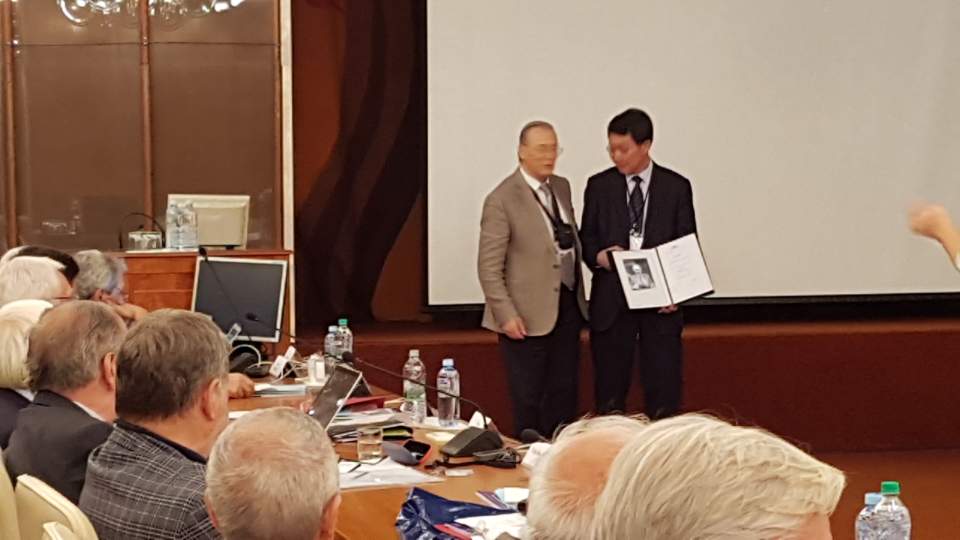
- 19 Sept 2017 Prof. Kim Soo-Bong (PI of the research unit at the Div. of Elementary Particles, CiRfSE) was awarded the Bruno Pontecorvo Prize for the year 2016
As announced in the news on 1 Mar 2017, the International Bruno Pontecorvo Prize 2016 was awarded to
- Professor KIM Soo-Bong (Seoul National Univ. / CiRfSE, Univ. Tsukuba), Professor WANG Yifang (IHEP, Beijing), Professor NISHIKAWA Koichiro (KEK, Tsukuba)
for their outstanding contributions to the study of the neutrino oscillation phenomenon and to the measurement of the Theta_13 mixing angle in the Daya Bay, RENO and T2K experiments.
The news was broadcasted also by KBS.
The Bruno Pontecorvo Prize has been anually awarded to scientists with outstanding achievements in particle physics by the Joint Institute for Nuclear Research (JINR), Dubna, Russia, since 1955.
- 10 Aug 2017 3rd CiRfSE HOU mini-workshop "Exchange Salon for the Hisory of Universe" (in Japanese)
In order to facilitate closer collaboration among various projects within the CiRfSE-RCHOU in the fields of particle physics, nuclear physics and astrophysics, both theoretical and experimental, we organize a series of "Salons" where new, young members at the RCHOU present their own research and prospects.
We encourage discussions among participants, exchanging new ideasthat would lead to new collaborative efforts.
- Date: 10 Aug 2017 (Thu) 15:15-17:00
- Venue: Natural Sciences Building-B, Room B118
- Program:
-
15:15 - 16:00 Takashi Iida
"Deciphering the history of the universe via underground particle experiments"
16:10 - 17:00 Yoshimasa Watanabe
"Chemical composition of molecular clouds in the nearby galaxies -- what it means"
- Number of participants: 29
Contact: Prof. F. Ukegawa
- 05 Aug 2017 Donator meeting celebrating the success of the crowdfunding project for Antarctic Observatory of Astronomy
To celebrate the success of the crowd-funding for Antarctic Observatory
of Astronomy, a meeting was held at University of Tsukuba on 5 August
inviting 25 donators. After the presentations by Prof. Nakai and Dr.
Nitta, and showing of 4D theater, the participants enjoyed a get-
together with the member of Division of Antarctic Astronomy.
- Date: 05 Aug 2017 (Sat) 13:45-17:00
- Venue: Natural Sciences Building-B, Rooms B114 and B118
- Number of participants: 25 + 8
Contact: Prof. N. Kuno
- 25 July 2017 CiRfSE Seminar
- Date: 25 July 2017 (Tue) 14:00-15:00
- Venue: CiRfSE Seminar Room (B108)
- Speaker: Wei Li, Assistant Professor of Physics,
- Physics & Astronomy Department, Rice University
-
- Title: Creating the tiniest perfect droplet at the LHC with the CMS experiment
- Abstract:
-
The quark-gluon plasma (QGP) created in high energy collisions of large nuclei (e.g., AuAu or PbPb) has been found to exhibit strong collective behavior as a nearly perfect liquid, which flows with little frictional resistance or viscosity. In 2010 and 2012, observations of a novel long-range particle correlation in high-multiplicity proton-proton and proton-lead collisions by the Compact Muon Solenoid (CMS) experiment at the Large Hadron Collider ( CERN, Switzerland) provided the first hint of collective effects and QGP formation in the smallest hadronic collision systems. I will present recent key findings of collectivity in small systems from CMS at the LHC run 1 and 2. Implications of the results to the standard paradigm of heavy ion physics, and new opportunities opened up in studying novel QCD phenomena in small, dense systems will also be discussed.
- Number of participants: 15
Contact: Asso. Prof. S. Esumi
- 1 July 2017 Crowdfunding Project for Antarctic Obsevatory of Astronomy achieved the goal!
The Crowdfunding Project for Antarctic Obsevatory of Astronomy (18 Apr - 30 June 2017) has succeeded in collecting funds of 12,203,000 yen, which is more than the initial goal of 10 million yen.
See below for details of this crowdfunding project.
We thank for your kind supports.

- 18 Apr - 30 June 2017 Crowdfunding for Antarctic Obsevatory of Astronomy
The Division of Antarctic Astronomy, CiRfSE, starts a project of crowfunding for construction of a wide-angle superconducting radio camera, which is a key component of the 10m THz Telescope to be placed at the Antarctic Obsevatory of Astronomy, using a crowdfunding service "Readyfor Charity".
The goal is to collect more than 10 million yen until 30 June 2017 23:00.
Visit the URL below (in Japanese) for details.
- Period: 18 Apr 2017 (Tue) to 30 June 2017 (Fri) 23:00
- URL: https://readyfor.jp/projects/antarctic-telescope
- Contact: Prof. N. Nakai
- 29 June 2017 7th CiRfSE interdisciplinary mini-workshop "Renkei Salon"
- Date: 29 June 2017 (Thu) 15:15-17:15
- Venue: D509 at Institute of Natural Sciences
- Program:
- 15:15 - 15:45 Takashi NISHIDE
(Faculty of Engineering, Information and Systems, University of Tsukuba; Associate Professor)
"Mathematical Hardness Assumptions and Public Key Cryptography"
- 16:00 - 16:30 Koichiro AKIYAMA
(Toshiba R&D Center; Chief Research Scientist)
"On the Latest Trend of Post-Quantum Cryptography"
- 16:45 - 17:15 Daisuke SAGAKI
(Faculty of Pure and Applied Sciences, University of Tsukuba; Associate Professor)
"Combinatorial Representation Theory, Algorithms, and Games"
- Number of participants: 29
Talks were given in Japanese.
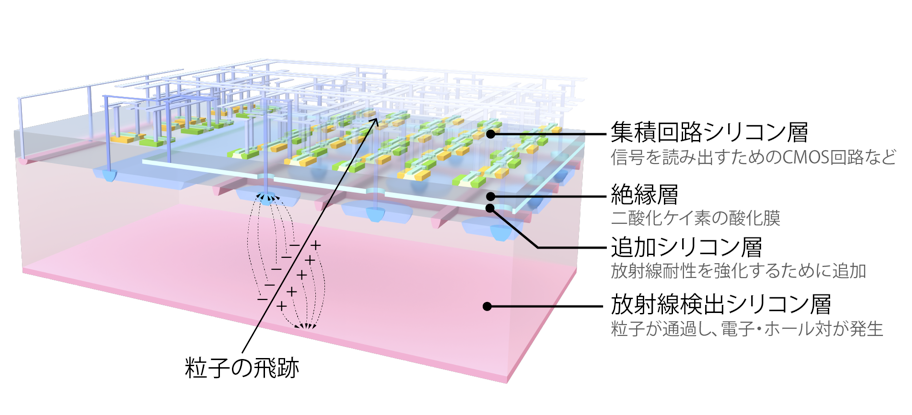
- 23 June 2017 Development of SOI Pixel Sensor for Particle Experiment
The Joint Development Team for SOI Pixel Detectors (KEK, Univ. Tsukuba, Osaka Univ. Tohoku Univ.), in which Asso. Prof. Kazuhiko Hara (Div. Particle Physics, CiRfSE) is actively involved, has succeeded in development of a SOI (Silicon-On-Insulator) Pixel Sensor that enables a location measurement with a precision of less than 1 micro meter.
The precision is achieved for the first time in the world, and improves the particle reaction detection by usual silicon semi-conducting sensors by about a factor of ten.
For details see the press release material (in Japanese).
- press release: 23 June 2017
- University of Tsukuba web page http://www.tsukuba.ac.jp/attention-research/p201706231400.html
- June 2017 CiRfSE Annual Report 2016 (in Japanese) was released.
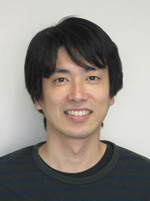
- 28 Apr 2017 Goro Ishiki (Div. of Elementary Particles) won "Particle Physics Medal: Young Scientist Award in Theoretical Particle Physics 2017"
Assi. Prof. Goro Ishiki (Div. of Elementary Particles, Research Core for the History of the Universe, CiRfSE) won the 12th "Particle Physics Medal: Young Scientist Award in Theoretical Particle Physics" of the Japan Particle and Nuclear Theory Forum for FY2017.
- Awarded paper:
"Emergent bubbling geometries in the plane wave matrix model"
by Asano Yuhma, Ishiki Goro, Okada Takashi, and Shimazaki Shinji, JHEP 1405 (2014) 075
- 22 Apr 2017 Exibition for the Science and Technology Week -- Kids University
The Research Core for the History of the Universe and the Center for Computational Sciences is pushing forward a joint study to clarify the history of the Universe.
For the Science and Technology Week, we display our projects on the cosmic neutrino background, antarctic observatory of astronomy, quark gluon plasma, Higgs particle, nucleosynthesis, and cosmic evolution for junior students
by posters, display of instruments, and a short movie.
At a separate hall, Assistant Professor Tom Nitta conducted a special seminar on the Space exploration with a telescope at the South Pole at the Kids University.
- Exibitions
- Date: 22 Apr 2017 (Sat) 10:00-16:00
- Venue: Sogo-B, B107 and B110
- Visitors: 337 (including 166 junior students)
- Special seminar "Space exploration with a telescope at the South Pole" by T. Nitta
- Date: 22 Apr 2017 (Sat) 13:00-13:45
- Venue: Sogo-A 1F A110
- Participants: 80 (including 50 junior students)
 |
 |
 |
| With teachers, high school students and Dr. Tom Nitta
|
Tom Nitta |
Venue |
Assistant Professor Tom Nitta conducted a special lecture "Space exploration with a telescope at the South Pole" at University of Tsukuba on April 22, 2017 as a program of the Kids University at the "University of Tsukuba Science and Technology Week" that includes special lectures and science experiments.
The University of Tsukuba organized this event to attract young students and we hope that draws interests in our university. The participants became "One-day University Students"
Nitta introduced the birth of space, classification and difference of galaxy and how to observe them. He explained some places at a high altitude, such as Hawaii and Chile, are appropriate for observations because of the dry and pure air. At the South Pole, researchers are able to conduct a highly accurate observation that is even difficult to do in Hawaii and Chile.
Nitta belongs to the Division of Antarctic Astronomy, CiRfSE, which plays a pivotal role in the South Pole 10m class terahertz telescope project.
(Reporter: Kazuko Fujita)
- 12 Apr 2018 Pamphlet of CiRfSE
The Pamphlet of our center was updated. See "More Infomation on the Center" of the top page.
- 1 Apr 2018 New members and associates of CiRfSE for FY 2017
Prof. Fumihiko Ukegawa became the coordinator for the Research Core for the History of the Universe, Asso. Prof. Yuji Takeuchi the chair of the Div. of Elementary Particles, and Asso. Prof. Kazuhiko Hara the chair of the Lab. for Development of Photon and Particle Detectiors.
Excoordinator Shinhong Kim became a Specially Appointed Professor of the Faculty of Pure and Applied Sciences and continue to contribute to CiRfSE.
See [Organization and Members] for the new organizers as well as the latest list of the members and associates for FY 2017.
- 21 Mar 2017 2nd CiRfSE HOU mini-workshop "Exchange Salon for the Hisory of Universe" (in Japanese)
To accelerate research exchange among particle physics, nuclear physics and astrophysics as well as between theory and experiment in the international core for research excange towards clarification of the History of Universe, we organized a series of "Salons" steered by young associates and fellows.
- Date: 21 Mar 2017 (Mon) 15:15-17:15
- Venue: Natural Sciences Building-B, Room B118
- Program:
-
15:15 - 15:55 Yosuke Watanabe
"Study on the super-high temperature material using a rare probe at high energy heavy ion collision experiment"
15:55 - 16:35 Hiroo Saito
"Observational study on the molecular gas structure in the star cluster formation region"
16:35 - 17:15 Makito Abe
"Radiation Transportation of Lyα galaxies and Lyα photons in the high red shift universe"
- Number of participants: 22
Contact: Prof. S. Kim, Dr. S. Mizuno

- 10-11 Mar 2017 2017 TIMS-CENIDE Joint Symposium on Nanoscience and Nanotechnology / Workshop of Pre-Strategic Initiatives: Ensemble of Light with Matter and Life for Discovery and Insights of Novel Phenomena / Workshop of CiRfSE, Research Core for Developing Energy and Environment-friendly Materials
hosted by TIMS, CENIDE (Center for Nanointegration, Duisburg-Essen Univ.), CiRfSE
- Date: 10-11 Mar 2017 (Fri-Sat)
- Venue: Sogo B Building, Lecture hall 110
(access)
- URL: http://www.tims.tsukuba.ac.jp/event.html
- Program
- Number of participants: 72
Contact: Prof. T. Nabeshima (tims [at] un.tsukuba.ac.jp)

- 06 Mar 2017 "Kisaragi Symposium 2016" by the Faculty of Physics
Prof. Shinghong Kim, the coordinator of the Research Core for the History of the Universe and the chair of the Laboratory for Development of Photon and Particle Detectors, retirs in March 2017.
The Faculty of Physics held the Kisaragi Symposium 2016 for three retiring Professors of the Faculty including Prof. S. Kim, collecting their final lectures.
- Date: 06 Mar 2017, Monday, 13:00-17:45
- Venue: 1D201 Lecture Hall, Univ. Tsukuba
- Webpage: http://hep-www.px.tsukuba.ac.jp/kisaragi/ (in Japanese)
- Program (in Japanese)
-
Final lecture by Prof. Shinghong Kim: "Towards the most fundamental nature of matter and the Universe just after the big-bang" (in Japanese)
Contact: Prof. F. Ukegawa
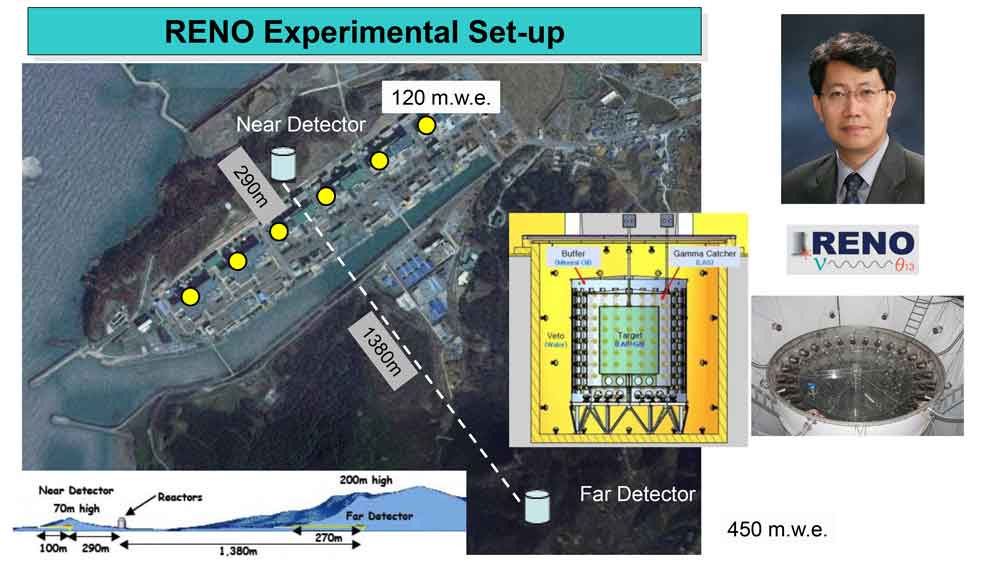
- 01 Mar 2017 Prof. Kim Soo-Bong (PI of the research unit at the Div. of Elementary Particles, CiRfSE) was awarded the Bruno Pontecorvo Prize for the year 2016
The Jury on the International Bruno Pontecorvo Prize has resolved to award the Bruno Pontecorvo Prize for the year 2016 to
- Professor KIM Soo-Bong (Seoul National Univ. / CiRfSE, Univ. Tsukuba), Professor WANG Yifang (IHEP, Beijing), Professor NISHIKAWA Koichiro (KEK, Tsukuba)
for their outstanding contributions to the study of the neutrino oscillation phenomenon and to the measurement of the Theta_13 mixing angle in the Daya Bay, RENO and T2K experiments.
The Bruno Pontecorvo Prize has been anually awarded to scientists with outstanding achievements in particle physics by the Joint Institute for Nuclear Research (JINR), Dubna, Russia, since 1955.

- 23-24 Jan 2017 3rd CiRfSE Workshop and 3rd Steering Committee Meeting (in Japanese)
- Date: 23(Mon)-24(Tue) Jan 2017
- Venue: Sogo B Building, Lecture hall 110
(access)
- Program:
-
23 Jan 2017
09:30-14:10 CiRfSE Workshop and Steering Committee Meeting
Number of participants: 37
15:00-17:00 Steering Committee Meeting (closed)
18:00-20:00 Get-together
24 Jan 2017
09:00-12:00 CiRfSE Workshop and Steering Committee Meeting
Number of participants: 25
13:00- CiRfSE Workshop (Parallel workshops)
Session 1: Div. Elementary Particles [Sogo-B
Session 2: Div. Antarctic Astronomy
Session 3: Div. Quark Nuclear Matters
Session 4: Lab. Inverse Promlems
A workshop on Energy and Environment-friendly Materials is planned in 10-11 March 2017.
- Session 1: Div. Elementary Particles (22 participants)
-
Sixteen presentations were given on various aspects of the projects currently under way at the Division of Elementary Particles, CiRfSE. They, along with lively discussions, were very beneficial to our understanding of the state of the projects, as well as in establishing the directions of research in the future.
-
- Session 2: Div. Antarctic Astronomy (14 participants)
-
It was reported and discussed to transport material and fuel to and in Antarctica for the implementation of the Antarctic 30-m Class Terahertz Telescope Project, as well as the telescope itself and observing equipment. Especially recent development of the transportation technology was quite impressive and encouraged us to realize the telescope project.
-
- Session 3: Div. Quark Nuclear Matters (18 participants)
-
Recent results on Quark Gluon Plasma (QGP) studies have been presented
from LHC and RHIC experiments with High-energy Heavy-ion collisions and
discussed especially on bulk properties of the QGP with soft probes like
fluctuations and azimuthal anisotropies as well as energy loss of hard
probes inside the QGP with jets, photons and heavy quarks. We've also
discussed the correlation between hard and soft observables and preparation
of future experimental program and development of particle detectors for
the future program. Various presentations with interesting results have been
given by young researchers and students, we had active and useful
discussion during the meeting.
-
- Session 4: Lab. Inverse Promlems (16 participants)
-
With a lot of interrupting questions on the way, it really was a lively opportunity to discuss possible applications of mathematics with many areas in the future. This workshop was successful to give the first step to create a new interdisciplinary field.
-
- 20 Jan 2017 Assi. Prof. Wataru Kobayashi of CiRfSE won the Yong Scientist Award of the University of Tsukuba
Assi. Prof. J. Kuwabara (TIMS) and Assi. Prof. W. Kobayashi (CiRfSE/TIMS) received the Yong Scientist Award of the University of Tsukuba and got a commendation as well as a reserach budget of 200,000 yen.
- 20 Jan 2017 Seminar on the History of the Universe
- Date: 20 Jan 2017 (Fri) 13:30-14:45
- Venue: CiRfSE seminar room (Humanity and Social Sciences Building B108)
- Speaker: Prof. Soo-Bong Kim (Seoul National University / University of Tsukuba CiRfSE)
- Title: "T2HKK project toward CP violation in the lepton sector"
- Number of participants: 14
Professor Soo-Bong Kim at Seoul Nation University/University of Tsukuba who is a PI of the research unit in CiRfSE presents a new project of T2HKK (Tokai to Hyper-Kamiokande in Korea) experiment. The second Hyper-Kamiokande in Korea will detect the neutrino beam coming from J-PARC together with the first Hyper-Kamiokande in Kamioka, Japan. It will determine the CP violation phase in the lepton sector which will play a key role to solve the puzzle of the matter dominant universe.
Contact: Prof. Shinhong Kim
- 11 Jan 2017 Laboratory for Mathematical Sciences
To prepare new collaborative exchanges in subjects in wider fields after the reorganization of two centers of the Faculty of Pure and Applied Sciences planned in mid FY 2017, the Laboratory for Inverse Problems was reformulated into the Laboratory for Mathematical Sciences.
- 12 Dec 2016 1st CiRfSE HOU mini-workshop "Exchange Salon for the Hisory of Universe" (in Japanese)
To accelerate research exchange among particle physics, nuclear physics and astrophysics as well as between theory and experiment in the international core for research excange towards clarification of the History of Universe, we organized a series of "Salons" steered by young associates and fellows.
- Date: 12 Dec 2016 (Mon) 15:15-17:15
- Venue: Natural Sciences Building-B, Room B118
- Program:
-
15:15 - 15:45 K. Kanaya
"Overview of our Project for the History of the Universe"
15:45 - 16:25 S. Mizuno
"Study of quark-gluon plasma by direct photons in high energy heavy ion collisions"
16:25 - 15:05 K. Takemasa
"COBAND experiment for cosmic neutrino background and development of superconducting photon detectors"
15:05 - 17:45 Y. Takamizu
"Selection of physical constants in eraly Universe by a Bubble Universe Model"
- Number of participants: 22
In the 1st Salon, our new fellows of the theory group, nuclear experiment group and particle experiment group introduced their research to start discussions towards new collaborations.
Presentation files are available at workshop's page.
See aslo our web page in Japanese.
Contact: Prof. S. Kim, Dr. S. Mizuno
- 5 Dec 2016 6th CiRfSE interdisciplinary mini-workshop "Renkei Salon" (in Japanese)
- Date: 5 Dec 2016 (Mon) 15:15-17:15
- Venue: Natural Sciences Building-D, Room D509
- Web site: http://sites.math.tsukuba.ac.jp/inverse-problem/renkei-salon/renkei-salon-6
- Program:
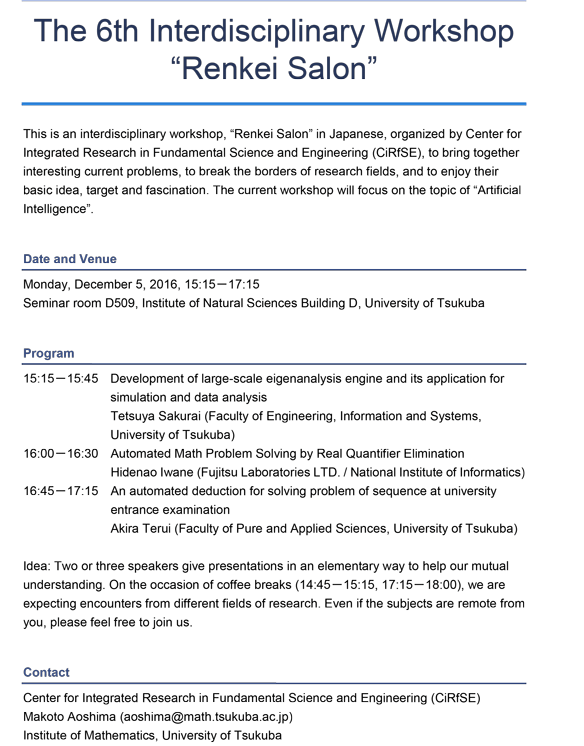
- Number of participants: 46
Contact: Prof. M. Aoshima, Asso. Prof. A. Terui
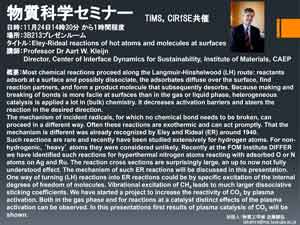
- 24 Nov 2016 Material Science Seminar "Eley-Rideal reactions of hot atoms and molecules at surfaces"
co-hosted by TIMS、CiRfSE
- Date: 24 Nov 2016 (Thu) 14:30-
- Venue: 3B 213
- Speaker: Professor Dr. Aart W. Kleijn
- Director, Center of Interface Dynamics for Sustainability, Institute of Materials, CAEP
- Number of participants: around 20
Most chemical reactions proceed along the Langmuir-Hinshelwood (LH) route: reactants adsorb at a surface and possibly dissociate, the adsorbates diffuse over the surface, find reaction partners, and form a product molecule that subsequently desorbs. Because making and breaking of bonds is more facile at surfaces than in the gas or liquid phase, heterogeneous catalysis is applied a lot in (bulk) chemistry. It decreases activation barriers and steers the reaction in the desired direction.
The mechanism of incident radicals, for which no chemical bond needs to be broken, can proceed in a different way. Often these reactions are exothermic and can act promptly. That the mechanism is different was already recognized by Eley and Rideal (ER) around 1940.
Such reactions are rare and recently have been studied extensively for hydrogen atoms. For non-hydrogenic, ‘heavy’ atoms they were considered unlikely. Recently at the FOM Institute DIFFER we have identified such reactions for hyperthermal nitrogen atoms reacting with adsorbed O or N atoms on Ag and Ru. The reaction cross sections are surprisingly large, an up to now not fully understood effect. The mechanism of such ER reactions will be discussed in this presentation.
One way of turning (LH) reactions into ER reactions could be by specific excitation of the internal degrees of freedom of molecules. Vibrational excitation of CH4 leads to much larger dissociative sticking coefficients. We have started a project to increase the reactivity of CO2 by plasma activation. Both in the gas phase and for reactions at a catalyst distinct effects of the plasma activation can be observed. In this presentations first results of plasma catalysis of CO2 will be shown
Contact: Asso. Prof. Takahiro Kondo (takahiro _AT_ ims.tsukuba.ac.jp)
- 22 Nov 2016 Material Science Seminar "Copper Catalysts in Methanol Synthesis: From Understanding to new Material"
co-hosted by TIMS、CiRfSE
- Date: 22 Nov 2016 (Tue) 17:30-
- Venue: 3B 213
- Speaker: Professor Dr. Malte Behrens (Univ. Duisburg-Essen, Germany)
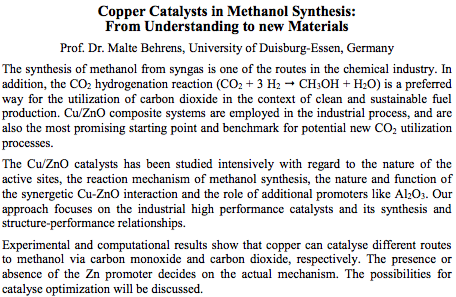
- Number of participants: around 20
This seminar was held as an event of the partnership program between University of Tsukuba and DAAD. We had a small party after the seminar.
Contact: Asso. Prof. Y. Yamamoto (Yamamoto〔at〕ims.tsukuba.ac.jp)
- 21 Nov 2016 TIA collaboration program 1st workshop on "Thermoelectric Generation Cell"
- Date: 21 Nov 2016 (Mon) 13:00-15:50
- Venue: Natural Sciences B118
- Program (in Japanese)
- Number of participants: 18
Contact: Prof. Y. Moritomo
- 19 Nov 2016 Workshop on Advanced Structural Study using SPring-8
- Date: 19 Nov 2016 (Sat) 9:00-18:00
- Venue: Room B118, Natural Sciences Building B, University of Tsukuba
- Program:
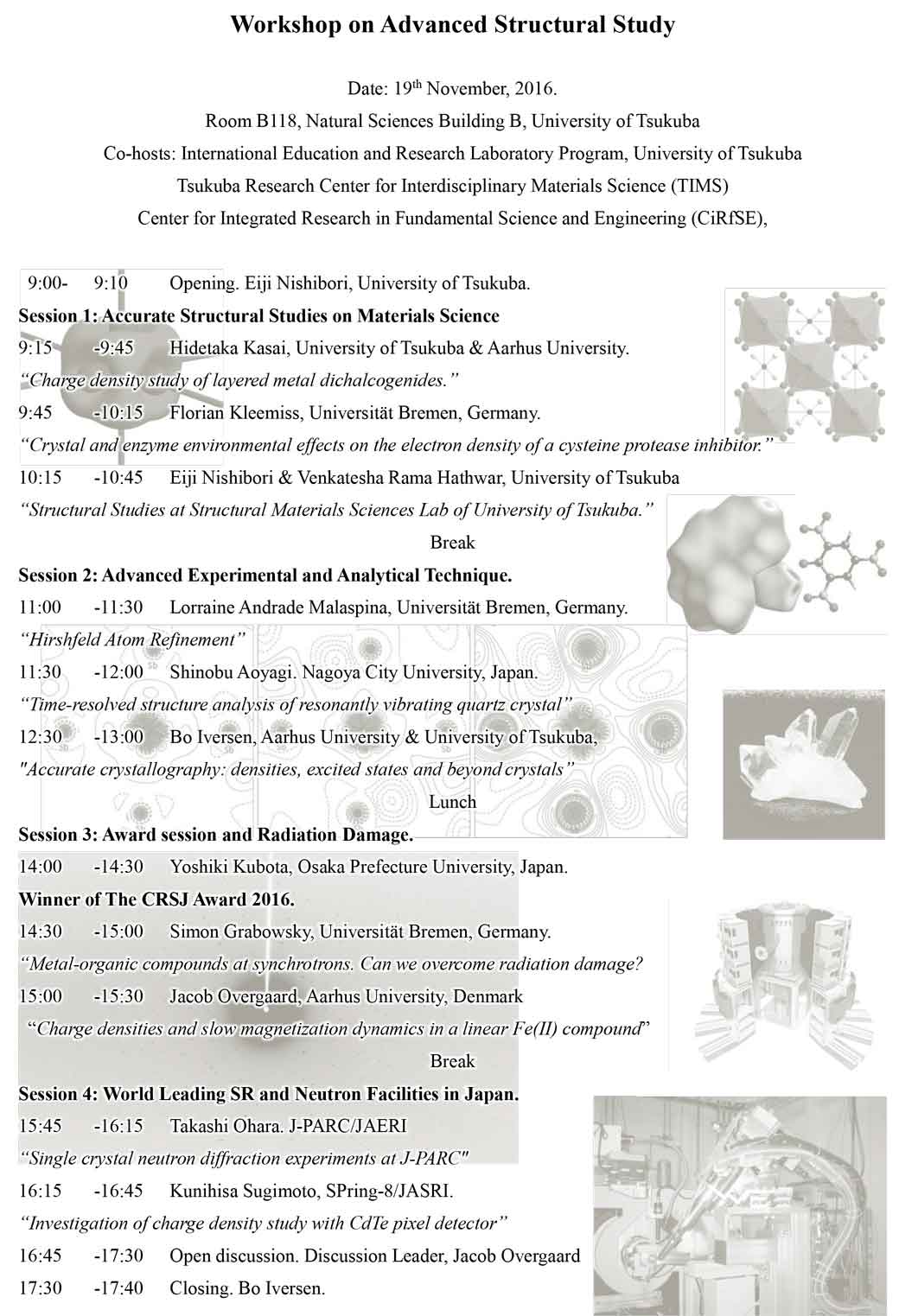
- Number of participants: 16 (including 6 from abroad)
Topics: Accurate Structural Studies on Materials Science / Advanced Experimental and Analytical Technique / CRSJ Award 2016 / Radiation Damage / World Leading SR and Neutron Facilities in Japan
Contact: Prof. Eiji Nishibori (nishibori.eiji.ga _AT_ u.tsukuba.ac.jp)
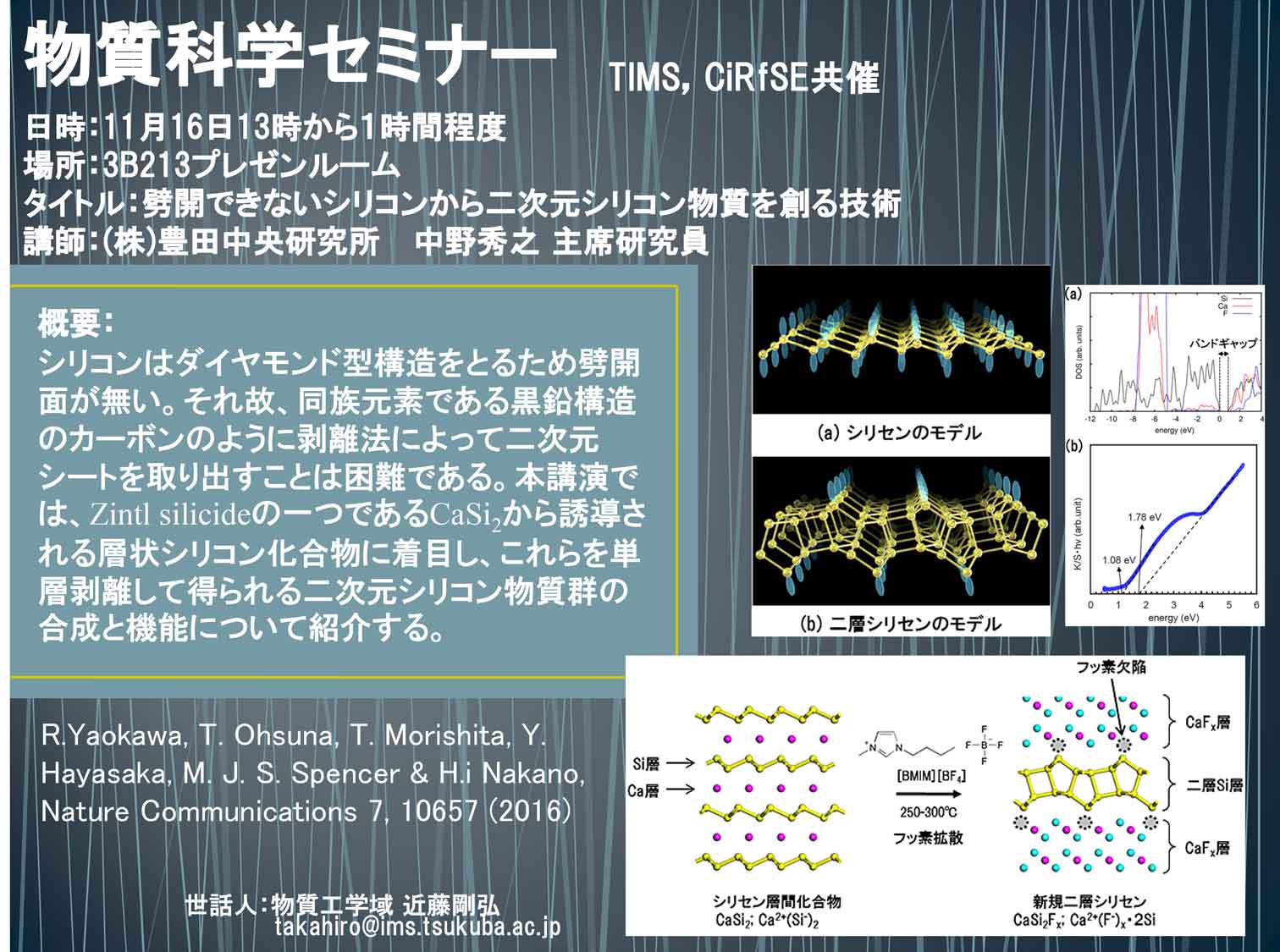
- 16 Nov 2016 Material Science Seminar "Technologies to create 2-dimensional Si materials from uncleavageable Si" (in Japanese)
co-hosted by TIMS、CiRfSE
- Date: 16 Nov 2016 (Wed) 13:00-
- Venue: 3B 213
- Speaker: Dr. H. Nakano, Toyota Central R&D Labs., Inc., Senior Fellow
- Number of participants: around 20
Contact: Asso. Prof. Takahiro Kondo (takahiro _AT_ ims.tsukuba.ac.jp)

- 10 Nov 2016 2nd TIA-ACCELERATE Symposium "Cooperation in measurement at TIA through light and quantum -- Towards creation of new science and industry" (in Japanese)
- Date: 10 Nov 2016 (Thu) 9:30-17:30
- Venue: International Congress Center EPOCHAL TSUKUBA
- Web page: http://www2.kek.jp/URA/tiaacc2016.html
- Program:

- Number of participants: about 100
Presentation files are given here .
- 5-6 Nov 2016 Exposition of CiRfSE at Campus Festival of Univ. of Tsukuba
An exposition introducing the research activities of CiRfSE was made at the Campus Festival "So-Ho Sai" of the Univ. of Tsukuba.
- Date: 5-6 Nov 2016 (Thu) 10:0-16:00
- Venue: 3A207, 3A209, Univ. Tsukuba
- Theme:
- (1) Clarification of the History of Universe
- (2) Innivations through Catalysis / Low-cost Thermoelectric Conversion Element for Waste Heat
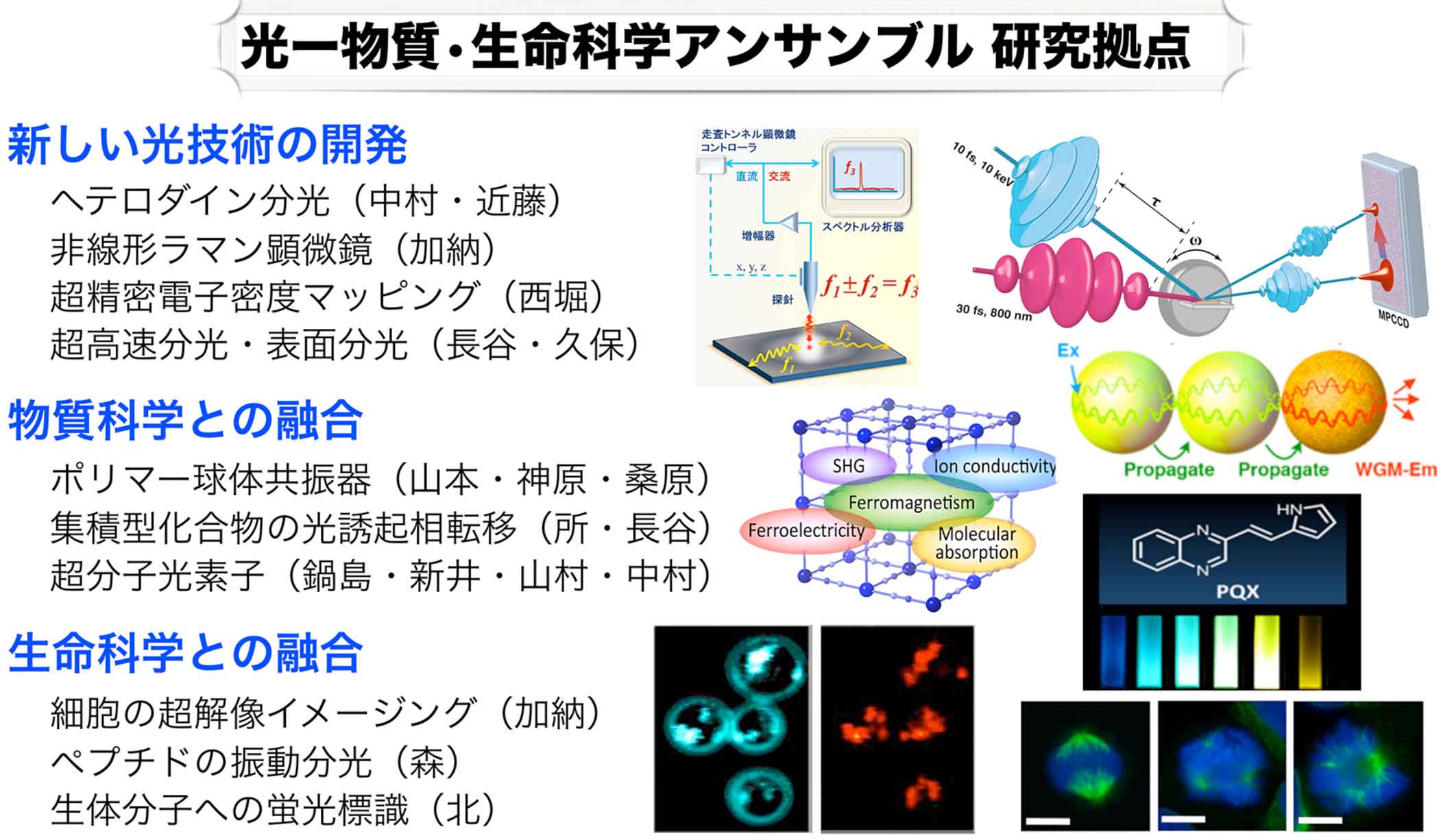
- 01 Nov 2016 Kick-off workshop for Pre Strategic Initiative on Excavation and Clarification of New Phenomena through Ensemble of Light, Materials, and Life Sciences (in Japanese)
Co-hostted by TIMS、CiRfSE
- Date: 01 Nov 2016 (Tue) 14:00--18:00
- Venue: Sogo-B Room 0110
(access)
- Program
- Symposium: 14:00- at Sogo-B Room 0110
- Party: 18:00- at Sogo-B Room 0170
- Number of participants: 54
- Contact: Asso. Prof. Y. Yamamoto (Yamamoto〔at〕ims.tsukuba.ac.jp)
- 31 Oct 2016 Workshop on Platinum Free Carbon Catalyst (in Japanese)
Hosted by TIA-Kakehashi Innovation of Platinum Free Carbon Catalyst for Fuel Cell
Co-hosted by TIMS, CiRfSE, Catalysis Society of Japan, Chemical Society of Japan, The Carbon Society of Japan
- Date: 31 Oct 2016 (Mon) 13:00-18:30
- Venue: International Workshop Room, University Hall, Univ. Tsukuba
- Contact: Prof. J. Nakamura (nakamura _AT_ ims.tsukuba.ac.jp)
- Number of participants: 50

- 17-19 Sept 2016 Tsukuba Global Science Week (TGSW) 2016
As a part of the Tsukuba Global Science Week (TGSW) 2016, the Research Core for the History of the Universe organized the 3rd International Workshop on "Universe Evolution and Matter Origin" as session 6, and the Research Core for Developing Energy and Environment-friendly Materials and TIMS organized the International Workshop on "Green Innovation" as session 7, at the EPOCHAL TSUKUBA / International Congress Center.
- Date:
- "Universe Evolution and Matter Origin": 17(Sat)-18(Sun) Sept 2016 2016
- "Green Innovation": 19(Mon) Sept 2016 2016
- Venue: EPOCHAL TSUKUBA / InternaIonal Congress Center
- "Universe Evolution and Matter Origin": Room 304
- "Green Innovation": Room 402
- URL: http://www.kokuren.tsuuba.ac.jp/TGSW2016/
- Program:
- "Universe Evolution and Matter Origin"
- "Green Innovation" (inluding abstracts)
- Number of participants:
- "Universe Evolution and Matter Origin": 47 (17 from other institutes)
- "Green Innovation": about 30
The session 6 "Universe Evolution and Matter Origin" has been held by the Research Core for the History of the Universe which includes
the following 3 divisions; (1) Antarctic Astronomy, (2) Elementary Particles, and
(3) Quark Nuclear Matters. These 3 divisions are trying to cooperate together to find
out the "dark-" matter, energy and galaxies and to understand the origin of matter,
phase transition and structure formation as well as their fluctuation and evolution.
Two half-day sessions have been completed with total 12 talks from these 3 divisions
as in the following. The total number of participants were 47 including 17 people from
outside of our university. There were various interesting presentations about on-going
projects from the 3 divisions and about current understandings as well as the future
projects. We appreciate for having fruitful discussions during and after
the sessions, even including the individual and separated meetings in the afternoon
of the 2nd and following days. We would like to and need to keep up these discussions
for our future plans.
Presentation files and some photos are available.
The thema of the session 7 "Green Innovation" was the energy material sciences.
Professor Ku introduced the latest results from Taiwan Photon Source at NSRRC, Taiwan.
Dr. Hathwar is the vice PI of the reserach unit of Prof. Iversen. He talk on the crystal structure of CH3NH3PbI3 which achieved energy transformation efficiency of 20%.
Prof. Gao and Prof. Li gave presentations on properties of organic optoelectronic materials.
From the University of Tsukuba, Prof. Kanbara gave a talk.

- 12 Sept 2016 Assi. Prof. Ishiki (Div. of Elementary Particles) presented a Physics Institute Open Seminar (in Japanese)
- Date: 12 Sept 2016, Mon, 9:30--10:30
- Venue: Natural Sciences Building-B, Room B114, Univ. Tsukuba
- Speaker: Assi. Prof. Goro Ishiki (CiRfSE, Div. of Elementary Particles)
- Title: "Discretization Approach to Superstring Theories"
- Number of participants: around 20
- 2 Sept 2016 1st SOI-STJ Workshop
- Date: 2 Sept 2016, Friday, 15:00--18:00
- Venue: Natural Sciences Building-B, Room B118, Univ. Tsukuba
- Number of participants: 16
SOI-STJ detector is being developed for the COBAND project aiming at detection of cosmic neutrino background.
Program, participants list and the presentation files (in Japanese) are given here .
- July 2016 CiRfSE Annual Report 2015 (in Japanese) was released.
- 1 July 2016 TIMS Workshop for Research Exchange

The workshop is in Japanese. Contact: tims@un.tsukuba.ac.jp
- Date: 1 July 2016, Friday, 13:00--17:00
- Venue: 3B402, Univ. Tsukuba
- Poster
- Program
- 17:30--19:30 Party at Soup Factory, fee:4000 yen
- Number of participants: 69
- 16 June 2016 5th CiRfSE interdisciplinary mini-workshop "Renkei Salon"
The 5th Renkei Salon will be held on the theme "Observation and deduction".
On the thema "Universe", three tals are planned.
- Date: 16 June (Thursday) 15:15--17:15
- Venue: Room D509 at Institute of Natural Sciences
- Talks (in Japanese):
- Prof. Fumiaki Tanigaki (JEM Utilization Center, JAXA, Associate Senior Engineer)
"How to use the International Space Station"
- Assi. Prof. Kohji Yoshikawa (Center for Computational Sciences, Univ. Tsukuba)
"Large scale structures of the cosmos"
- Asso. Prof. Tamotu Kinoshita (Institute of Mathematics, Univ. Tsukuba)
"Wave equation in Einstein and de Sitter space-time"
- Number of participants: 39
See also the web page of the Renkei Salon (in Japanese).
- 7 June 2016 Open Informal Seminar by Dr. Oliver Busch
(Division of Quark Nuclear Matters)
- Date: 12 Dec. 2014, 16:30--17:30
- Venue: 1F201
- Speaker: Dr. Oliver Busch
- Title: Low-mass di-electron measurements with the CERES/NA45 experiment with track based RICH ring resonstructon at SPS energies
- Abstract:
-
The measurement of low-mass di-leptons from Ultra-Relativistic Heavy-Ion collisions allows to probe modifications of the masses of vector mesons related to chiral symmetry restauration in the Quark Gluon Plasma. We present measurements of di-electrons at the CERES detector using track based RICH ring reconstruction techniques. The results show a modification of the spectral function of the rho meson consistent with a broadening in the hadronic phase and coupling to baryons.
- Number of participants: around 15
- 21 May 2016 Fellow of the Surface Science Society of Japan
Prof. J. Nalkamura of the Division of Materials for Chemical Conversion became a Fellow of the Surface Science Society of Japan.
- 20 May 2016 Kick-off Symposium for Synchrotron Radiation Materials Science Course, PAS, Univ. Tsukuba
"Career-up as Scientist/Engineer through Use of Synchrotron Radiations"
- Date: 20 May 2016 (Fri) 13:00-17:00
- Venue: Sogo B0110
- Program (in Japanese)
- Number of participants: 35
Co-hosted by CiRfSE.
- 28 Apr. 2016
The member list was updated for the version 12 Apr. 2016.
- April 2016 Construction of international core for research excange towards clarification of the History of Universe
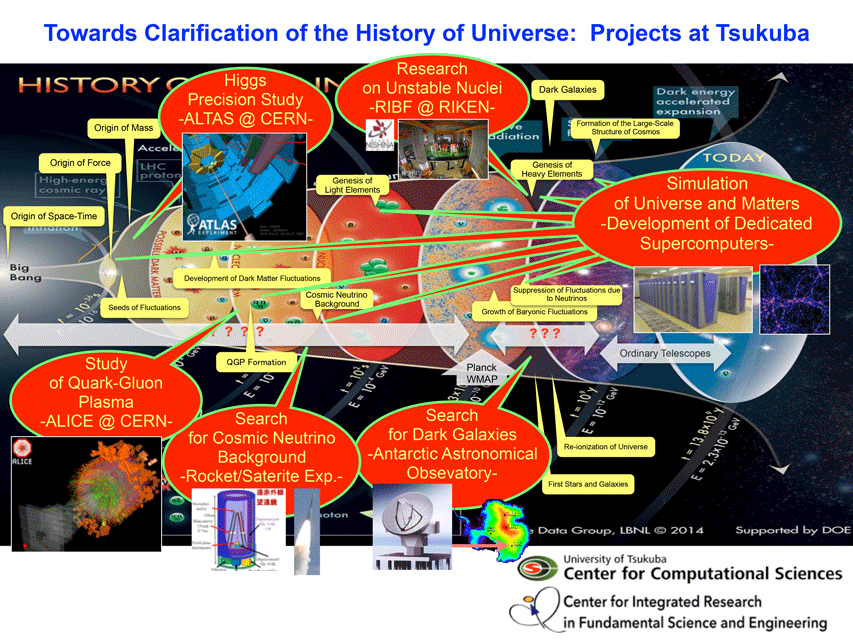
A budget for construction of international core for research excange towards clarification of the History of Universe was approved by the Ministry of Education, Culture, Sports, Science and Technology (MEXT) for the FY's 2016--2021.
In close collaboration with the Center for Computational Sciences (CCS), Univ. of Tsukuba, we push forward the project through employment of research fellows, cross-appointment of researchers in collaborating institutes, and introduction of a foreign research unit.
- 25 Mar. 2016
The pamphlet of CiRfSE was updated for FY 2016.
- 15 Mar. 2016
The list of the members and associates was updated for FY 2016 at
[Organization and Members].

